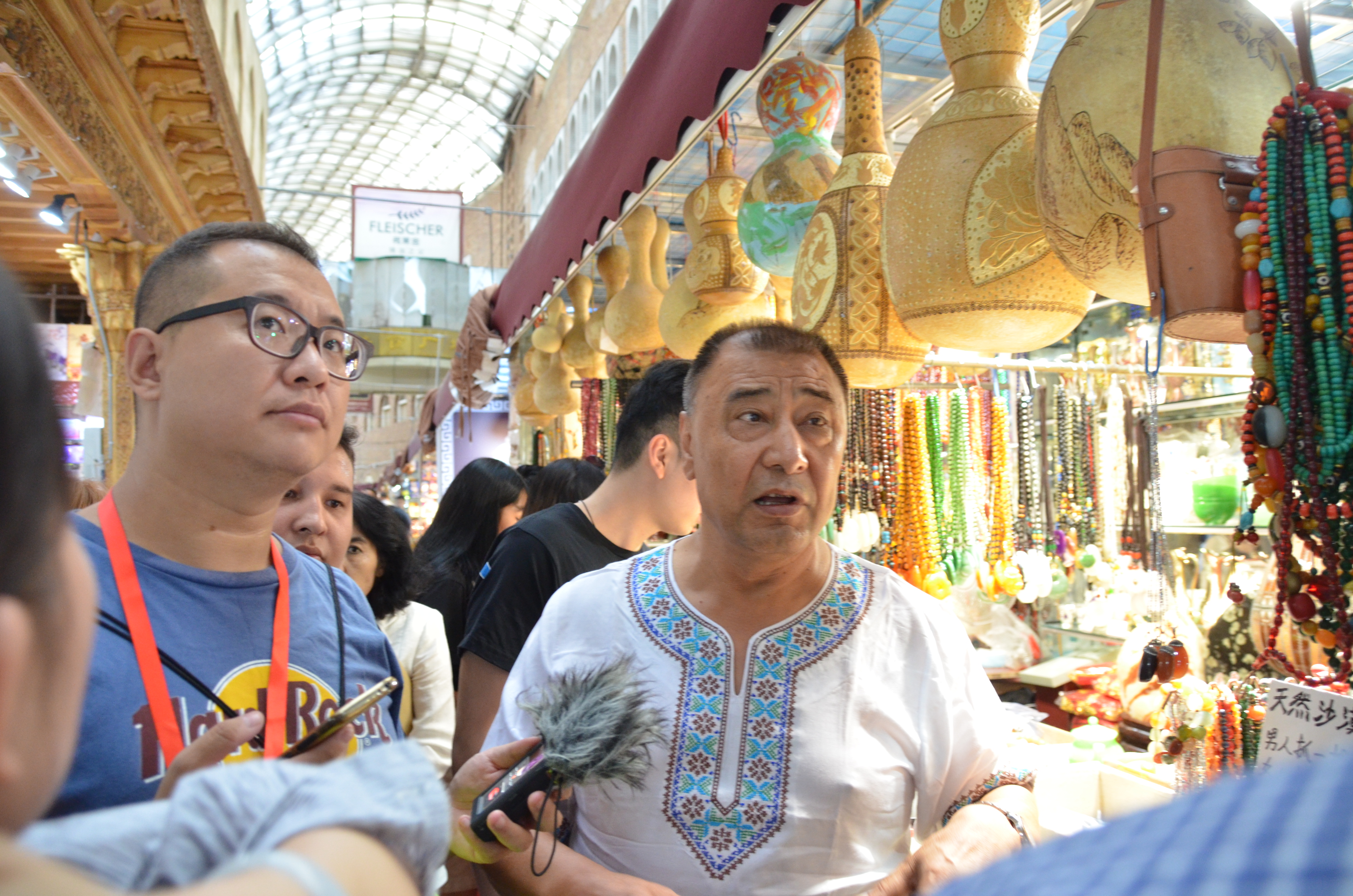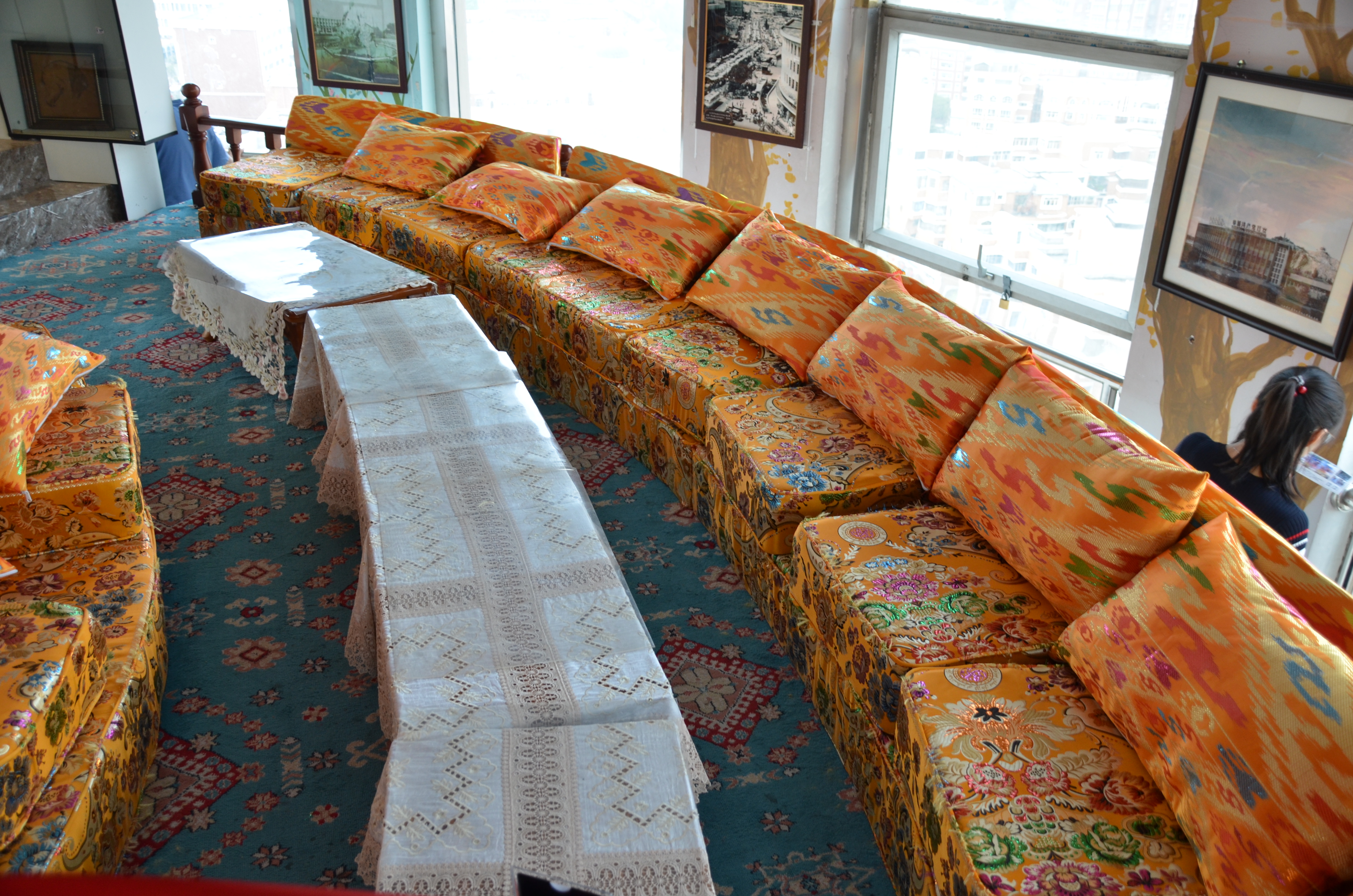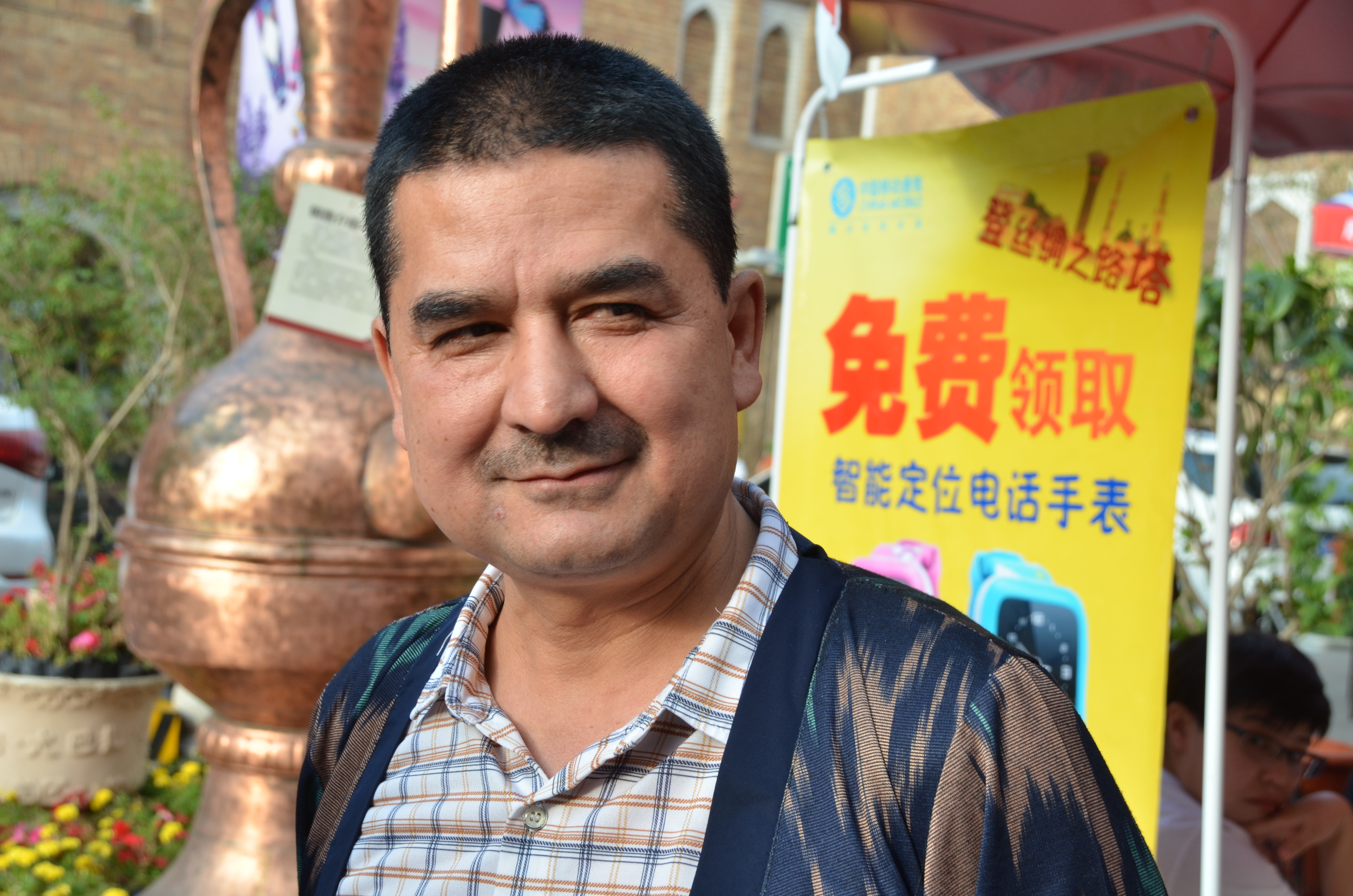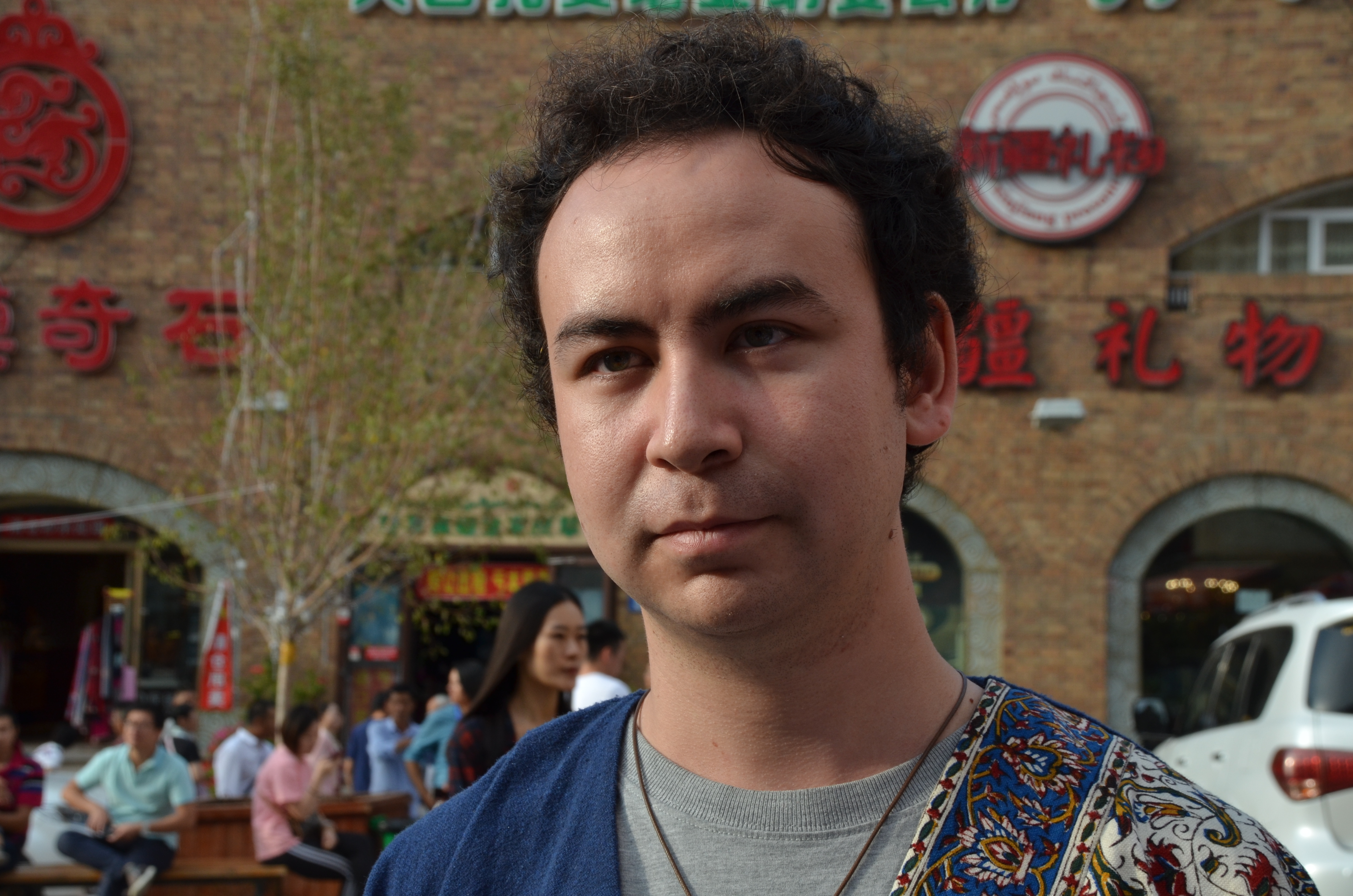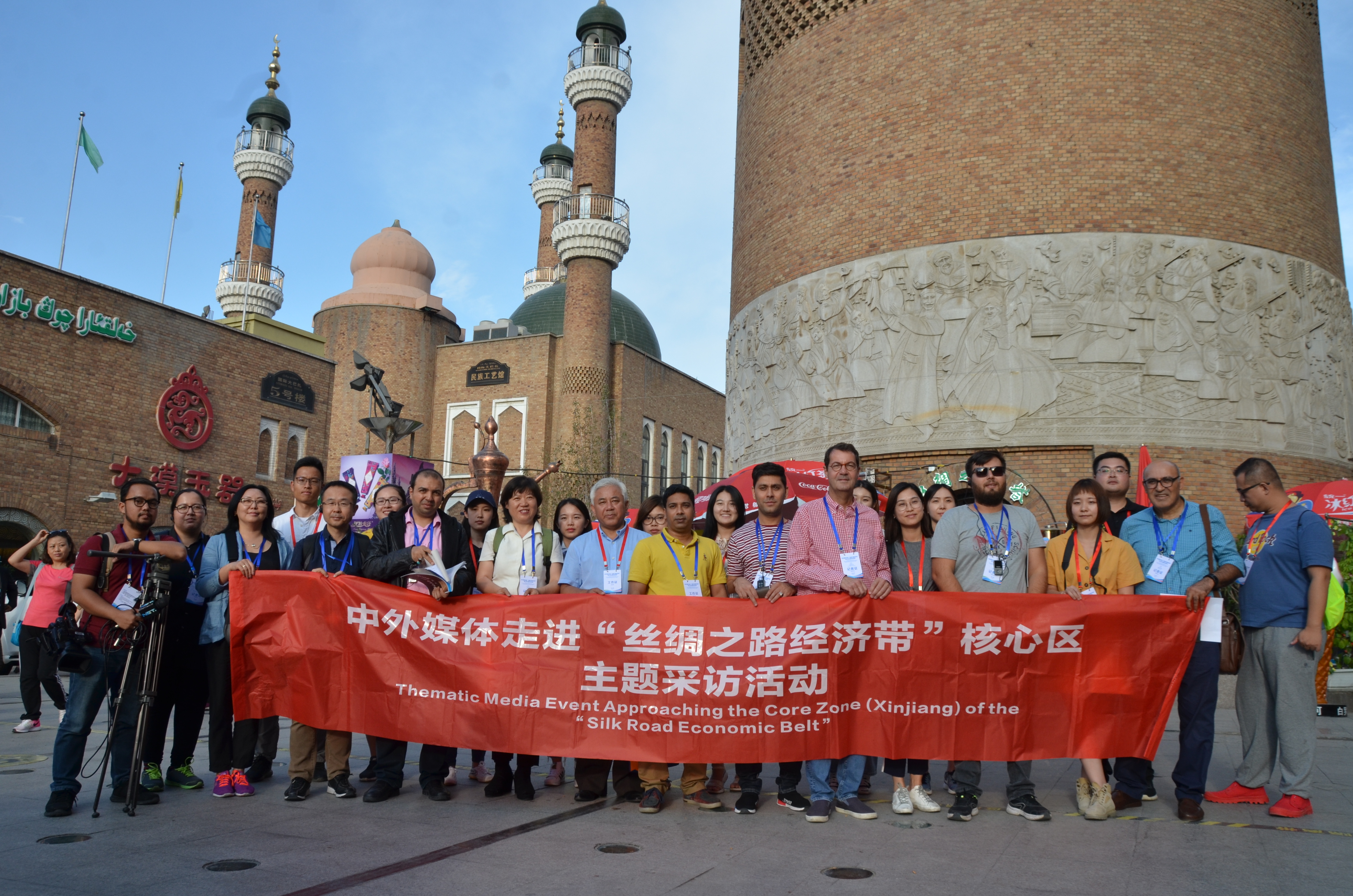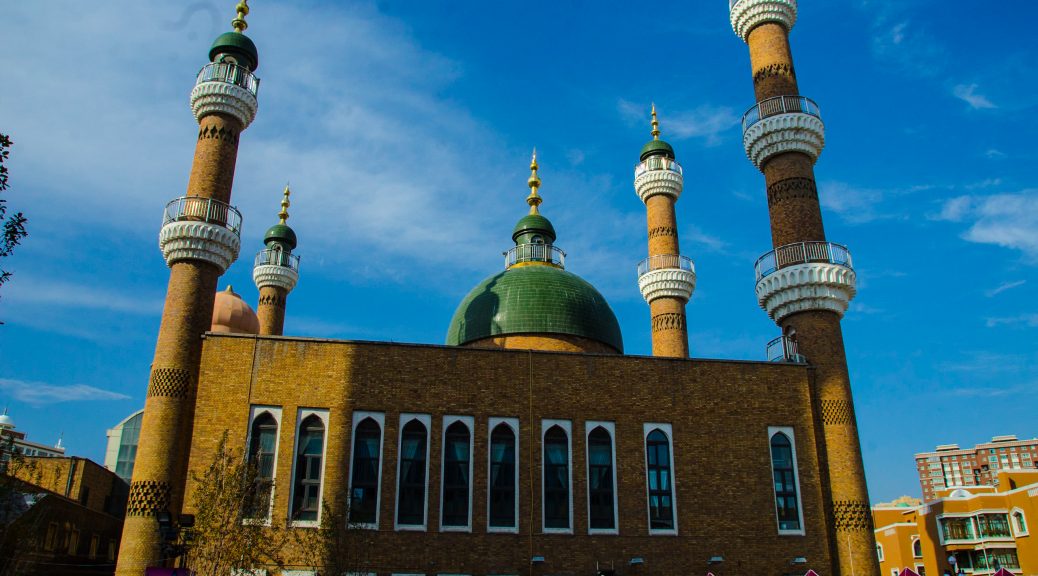Av Xuefei Chen Axelsson
Stockholm den 17 oktober (GreenPost) – Den 26 augusti gick över 30 kinesiska och utländska mediereporter i Urumqi Qidaowan distriktsförvaltningskommitténs kommande grannar kommittee för att delta i de nationella familjeaktiviteterna.
Reportrarna intervjuade gemenskapschefen och folket i olika etniska grupper, besökte samhället och etniska familjer och åt lunch med folket i alla etniska grupper. De bevittnade folkets skratt och tull i den nationella sammansättningen och smakade den goda maten med etniska egenskaper i Xinjiang.
När vi lämnade bussen såg reportern lyktorna här, och det fanns flera stora bord på gatan på gården. Människor från alla samhällsskikt satt ihop. Bordet är fullt av mat, handplockat ris, stekt nudlar, vattenmelon, Honung, druvor och andra livsmedel. Vattenmelonen här är riktigt stor och söt.
Turistguiden sa att det fanns en sann historia om Adi Aisha. Adi Aisha var en arbetare vid Urumqi Chemical Plant, huvudsakligen verksamt inom transport av råvaror för tillverkning av svavelsyra. Oavsett om det var blåsigt eller regnigt, regn eller snö, året runt var han oavbruten och uppgiften överfulgades varje månad. Han hade blivit värderad som modellarbetare på fabriken många gånger, och han hade blivit ett exempel för ungdomar i den kemiska anläggningen vid den tiden. Före sin död donerade han sina livslånga besparingar på 1000 yuan (uppskattad till den nuvarande 120 amerikanska dollar) till fabriken för att belöna bra kamrater som är aktiva i arbete och nationell enhet. Adi Aisha var inte bara en vanlig person, men hade en sorts ande. Under de senaste 32 åren sedan hans död har han blivit en andlig symbol för att överföra syftet med nationell enhet. Han gjorde “Adi Aisha” nationell enhetsblomma i Shuimogou-området och vidarebefordrades från generation till generation. Detta var också det bästa exemplet som en gammal parti medlem satte till att skapa en nationell enhetsfamilj.
För att fira Adi Aisha har folk byggt upp sin staty här.
Enligt medlemmen av CPPCC: s nationella kommitté och den första sekreteraren Mudan Tiemuer Niyazi grundades gemenskapen på 1980-talet. Inhabited av tre etniska grupper, Uygur, Han och Hui, partiorganisationerna spelar en viktig roll här och nära förenar de olika nationaliteterna. De tar den lokala festorganisationen som kärna, engagerar sig i olika aktiviteter eller lärande, och främjar enighet för alla. De inrättade också kooperativ. På kooperativet väver alla hantverk tillsammans. Genom aktiviteter är människor nära förenade. En annan viktig del är National Unity Courtyard. “Vi måste vidarebefordra Adi Aishas ande”, sade Tiemuer Niyazi.
Varför är denna enhet särskilt viktig? Mudan Tiemuer Niyazi sade att Xinjiang är ett multietniskt område, och enheten för alla etniska grupper i Xinjiang är vår livsnivå. Från historia till nutid måste alla etniska grupper leva tillsammans och göra framsteg tillsammans. Utan nationell enhet kommer det inte att finnas någon stabilitet i Xinjiang, och nationell enhet är vad vi måste göra. Utan nationell enhet finns det inget harmoniskt samhälle i Xinjiang. Alla etniska grupper är lika, bor tillsammans och förenas ihop. Det betyder inte att Xinjiang inte var förenat tidigare, vi har alltid varit eniga. Juli 2009-incidenten 2009 var en sådan händelse att de “tre krafterna” utanför landet ansträngde sig för att undergräva vår enhet och fred. Denna händelse var den som folket i alla etniska grupper i Xinjiang motsatte sig.
Den 26 augusti var det den sista dagen på Nationalfestivalen “Kurban festival” i Xinjiang. Folk i samhället tycktes födda musikaliska, sjunga och dansa, gamla och unga, de var alla väldigt glada att fira festivalen på det här sättet .
De sjunger inte bara traditionella sånger, barn dansar också modern dansdans.
Mier Guli. Anne sjöng en vacker “Sjungande en sång till partiet”. Den här sången har sjungits i årtionden, och nu är den fortfarande så vacker, särskilt sången av Mier Guli, mycket rörlig.
“Hulunbeier Prairie”, en mongolisk sång får fler människor att känna oändlig glädje, harmoni och fred. Singing kan förmedla starka känslor och kärlek. Detta var Xinjiang-folkets liv. De är lika fria och säkra som de kan. Vad reportern känner här är att upprätthålla partiledningen. Samtidigt går partiledarna djupt in i gräsrots och massorna. Festmedlemmarna och massorna är alla väldigt glada. Speciellt för äldre, när reportrar intervjuade dem, sa de alla att livet är väldigt nöjd nu. Under de senare åren var de väl omhändertagna av partiet och regeringen.
Lunchmat är från alla familjer som tar med maträtt här. Det kan också vara att alla kan ta med ett program om möjligt. Kortfattat är den här typen av kulturell aktivitet på gemenskapens friluftsplats faktiskt vad som har hänt i Kina sedan befrielsen. Det är en kulturell underhållning som många tycker om eftersom det är överkomligt. Du behöver inte gå till teatern för att uppleva kulturen. Som en kulturell aktivitet är denna kulturella atmosfär djupt rotad i människornas hjärtan.
I själva verket har Xinjiang för att stärka den nationella enheten under de senaste åren formulerat och genomfört en rad nya politiska åtgärder för att främja nationell enhet. En av dem är politiken för nationell enhet och familj. Till exempel har regionala enheter nyligen skickat människor till bönderna och boskapsbolagen i södra Xinjiang för att ge presenter, till exempel att ge barnleksaker, duschar, bord och stolar etc. för att besöka det fem eller sex gånger om året. För att förbättra ömsesidig förståelse, som de östra regionen hjälper den västra regionen, vill de provinsiella huvudstäderna hjälpa bröder och systrar i andra regioner. Denna typ av deltagande, kommunikation och utbyte är en form av demokrati, nationalitet och för människors försörjning. Det förkroppsligar ömsesidig hjälp, men inte ömsesidig avveckling.
Smaka på Xinjiangs handplockade ris, Hamimelon och stor vattenmelon, du kan känna solskenet här är sött, frukten är söt och folket lever lyckligt. Denna intervju var en fältintervju utförd av kinesiska och utländska medier organiserad av Statens informationsbyrå i kärnområdet i Xinjiang Silk Road Economic Belt. Det är underförstått att Xinjiang täcker ett område på mer än 1,66 miljoner kvadratkilometer, med fyra av Sveriges landområde. Den totala befolkningen som bor i detta område är 22 miljoner, vilket motsvarar den totala befolkningen i två sverige. Det finns 56 etniska grupper som bor i det stora landet Xinjiang. Bland dem finns 13 etniska grupper som lever här i generationer. De är Uygur, Han, Kazak, Hui, Mongolian, Kirgiz, Xibo, Manchurian, Tadzjik, Uzbek, Daur, Tatar och Ryska.
Sedan antiken har Xinjiang varit ett multietniskt område och en region med kulturella resurser. Xinjiang är känt som västra regionen. Det är en lång korridor av etnisk migration och historia. Det är en helig plats för mångkulturella utbyten, en integrerad del av den kinesiska kulturen, och en hel natt plats för den gamla Silk Road. Under 60 f.Kr. förenade västra Han-dynastin västra regionen och etablerade de västra regionerna, som markerade Xinjiangregionens officiella inträde på det kinesiska territoriet. År 1884 etablerade staten provinsen i Xinjiang och tog betydelsen av det nyinvesterade hemlandet. Xinjiang ersatte officiellt det gamla namnet “Western Region”.
Under tusentals år har folket i alla etniska grupper i Xinjiang arbetat tillsammans på detta land för att skapa en fantastisk civilisation. Historiska och kulturella platser, kulturella reliker speglar kulturella egenskaper hos olika etniska grupper och bevittnade utvecklingen av Xinjiangs historia och förändringar av olika nationella kulturer. Buddism, islam, kristendom, katolicism, ortodoxism, taoism och många andra religioner sameksisterar här. Östra och västra kulturer blandar här. De fyra forntida civilisationerna konvergerar här. Den kinesiska nationella mästaren Ji Xianlin sade att i världens långa historia och vidsträckta inflytande finns det bara fyra kulturella system: antika Grekland, Kina, Indien och Islam. Det finns ingen femte, och den plats där dessa fyra kulturer träffas är bara i Xinjiang i Kina. Det finns ingen sekund. Därför är Xinjiang en unik plats i världen.
Xinjiang har 18 nationella förstklassiga hamnar, inte bara beroende av Kinas inhemska stora marknad med en befolkning på 1,3 miljarder men också inför den stora kanalen av materialcirkulation, personalutbyte och kulturell integration som också har 1,3 miljarder Central- och Sydvästasiatiska marknader. Xinjiang är kärnområdet i “Silk Road” ekonomiska bältet. Genom det kinesiska-europeiska godståget förväntas det bli ett transportcentrum som förbinder Central- och Sydvästra Asien och även Europa. Framtiden kommer att spela en viktigare roll och fortsätter att skriva en ny era av Silk Road civilisationen. De utländska medier som deltar i denna intervju inkluderar NHK från Japan, Green Post of Sweden, Echo News of Belgium, Toro News of Afghanistan, Gikabar National News Agency i Kirgizistan, Förenade Arabemiraten i Bangladesh, NET TV i Indonesien Indien, de vanligaste medierna av Indien och Egypten, Pakistan, Malaysia, Turkiet och Uzbekistan media. De är journalister från länder längs Silk Road Economic Belt och kommer att utforska mysterierna kring kärnområdet i Sidenväg ekonomiska bältet.
Foto /text Xuefei Chen Axelsson
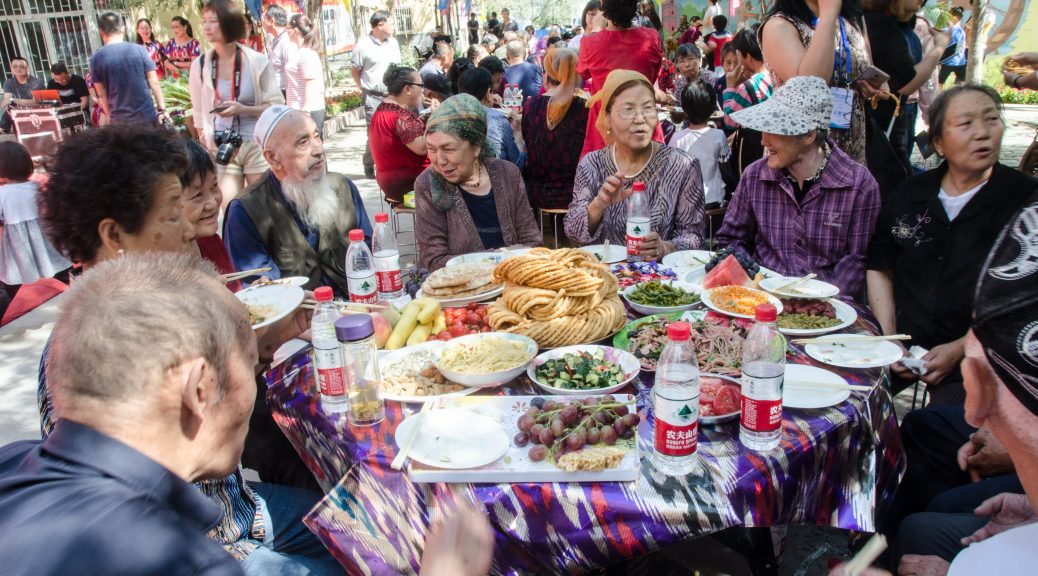
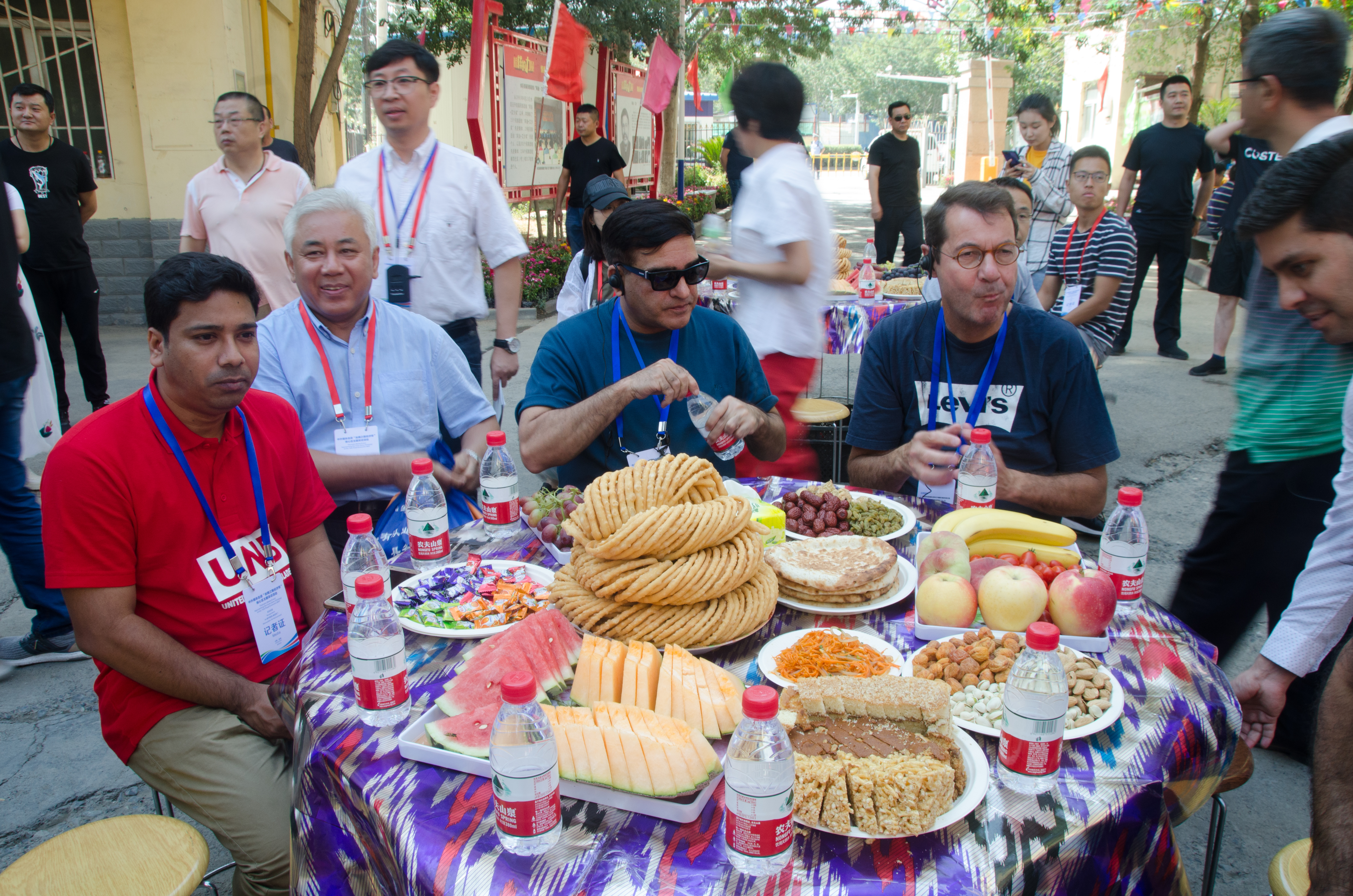
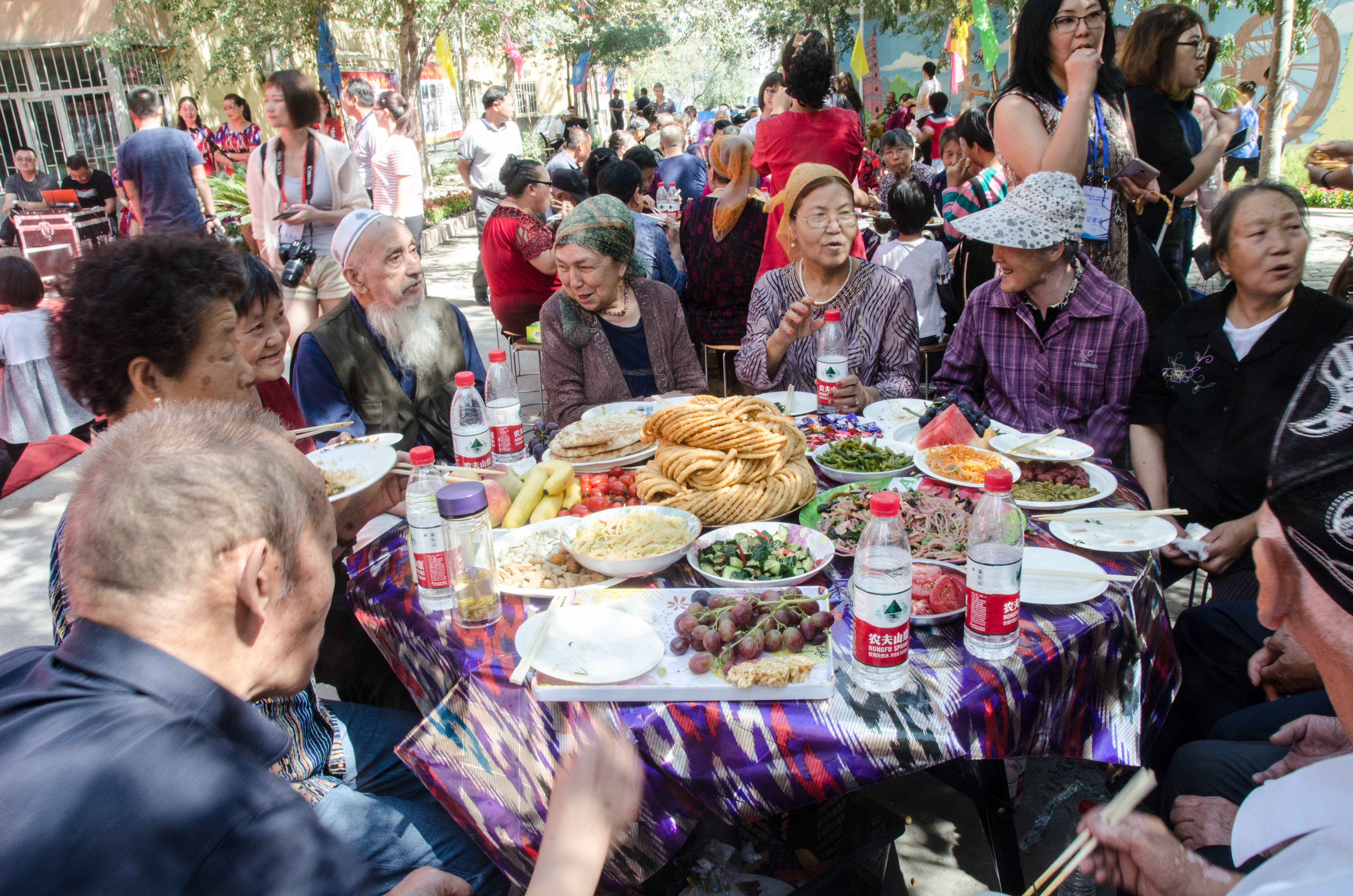

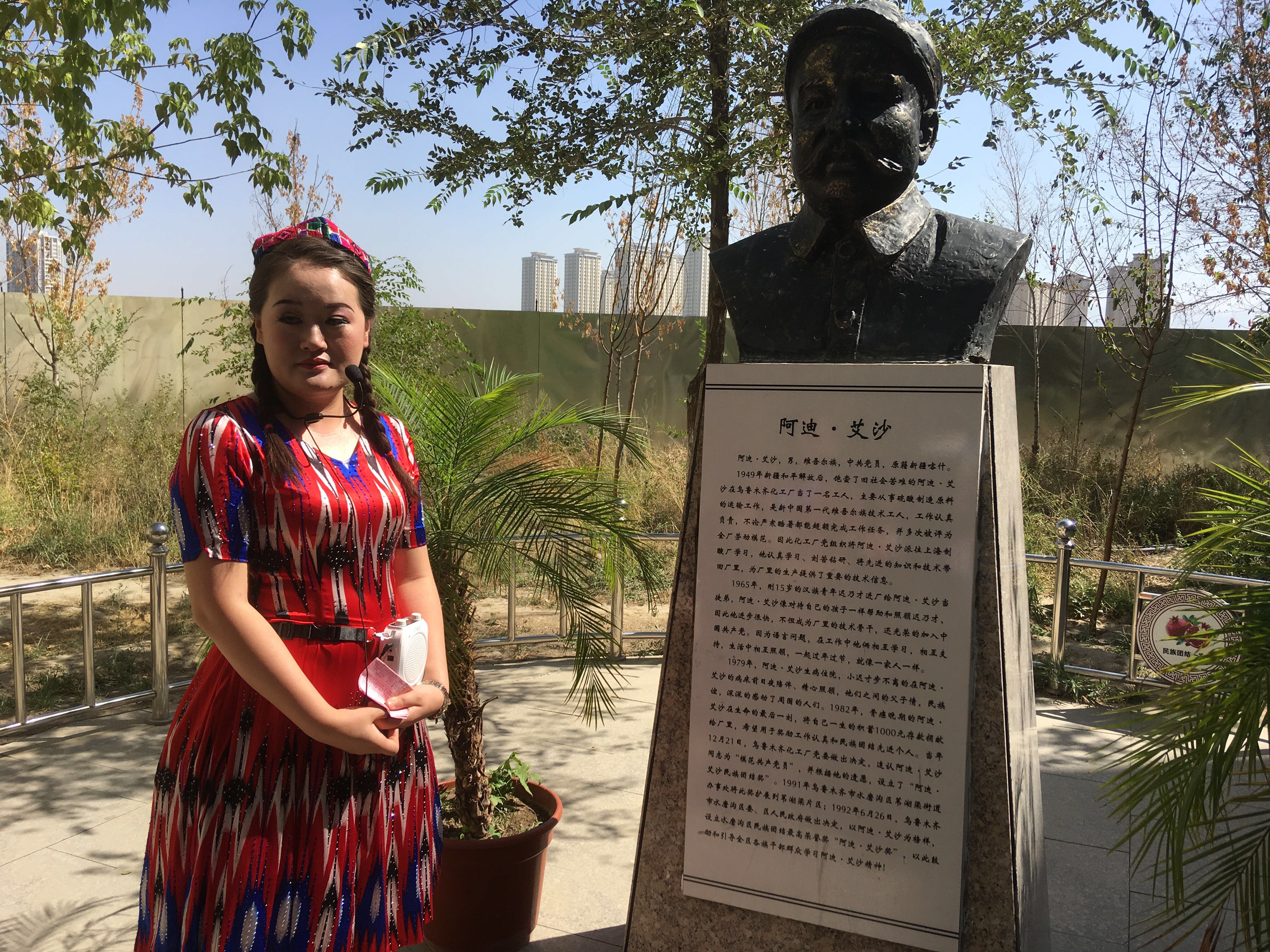
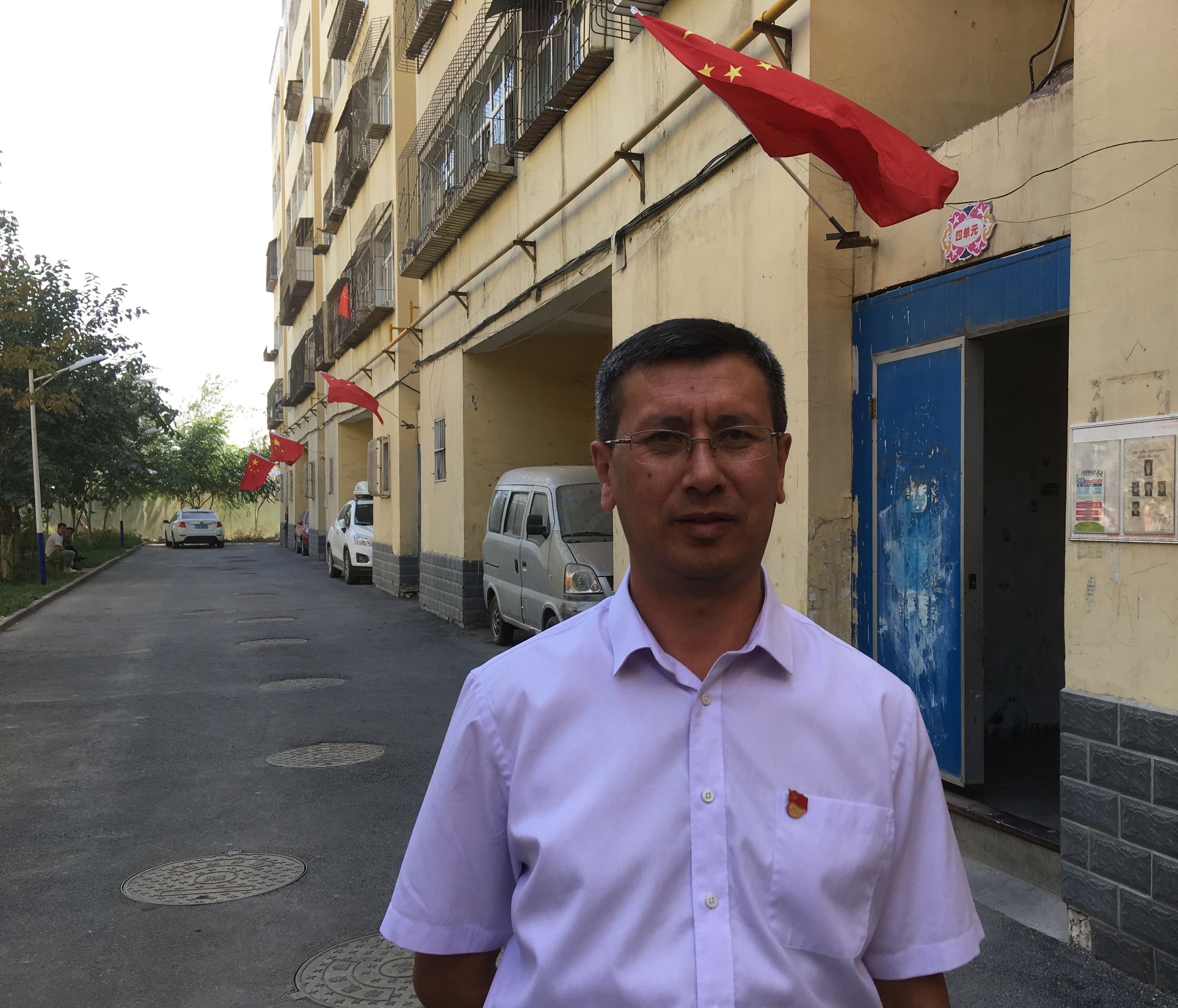
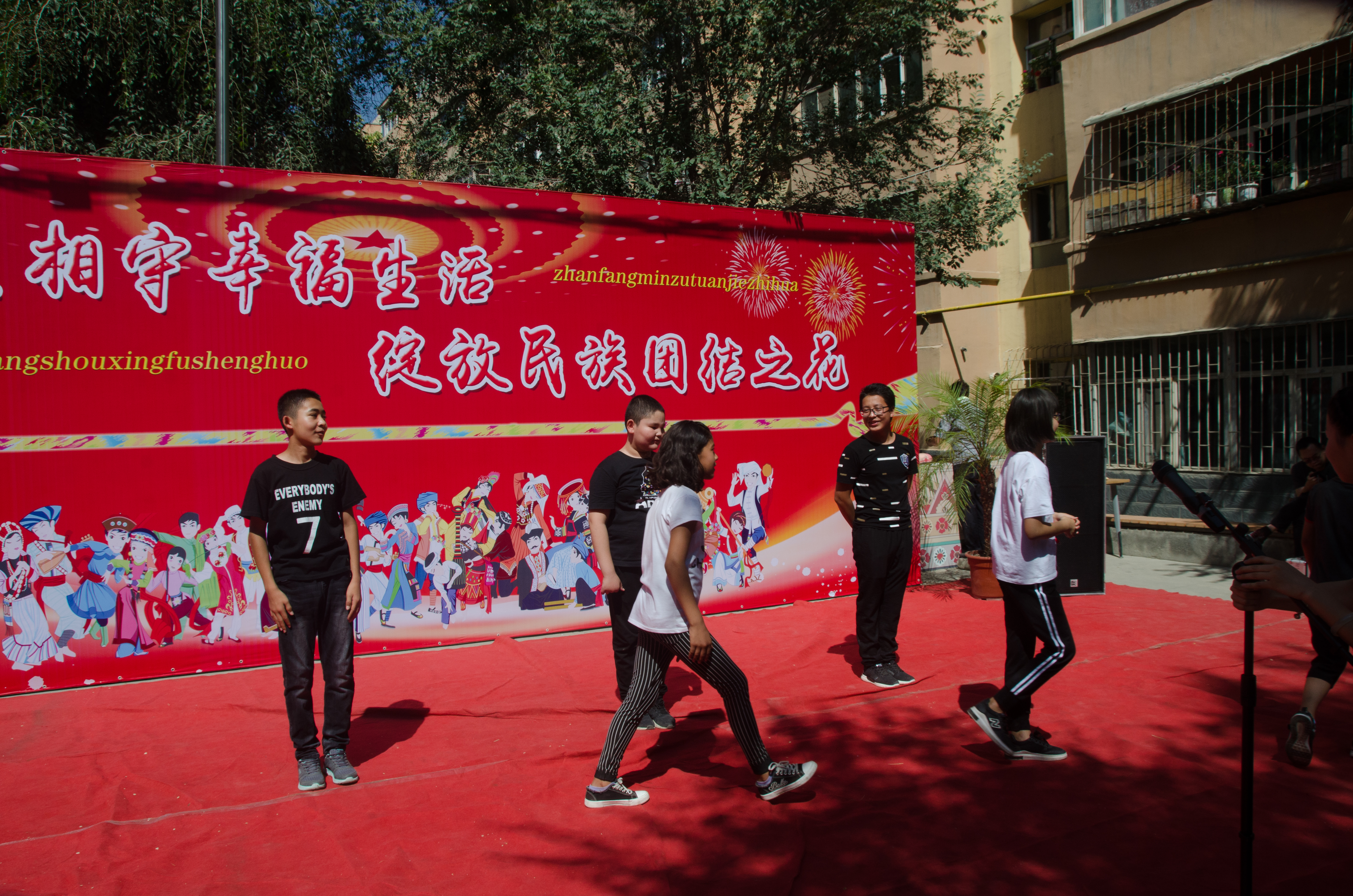
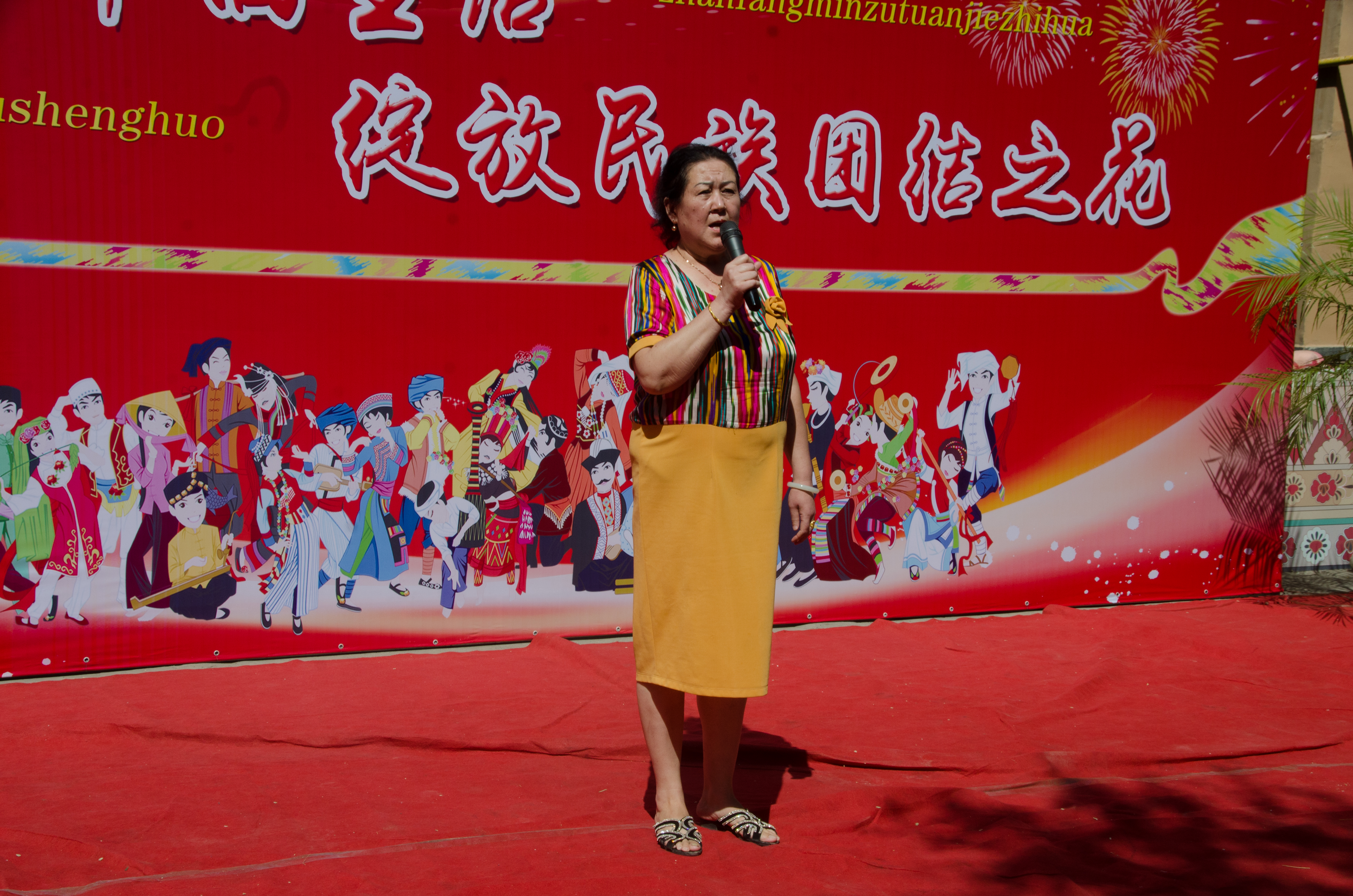
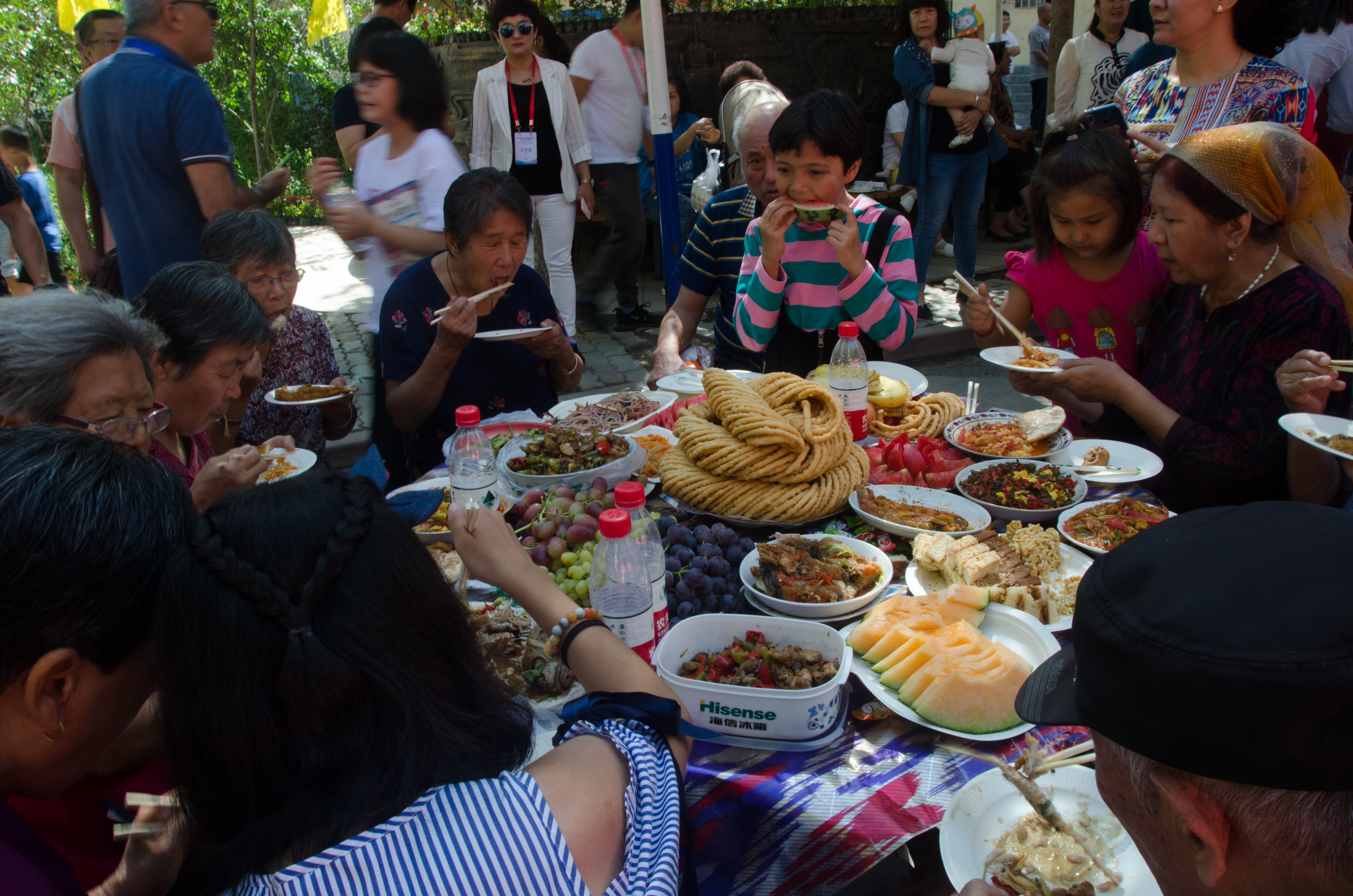
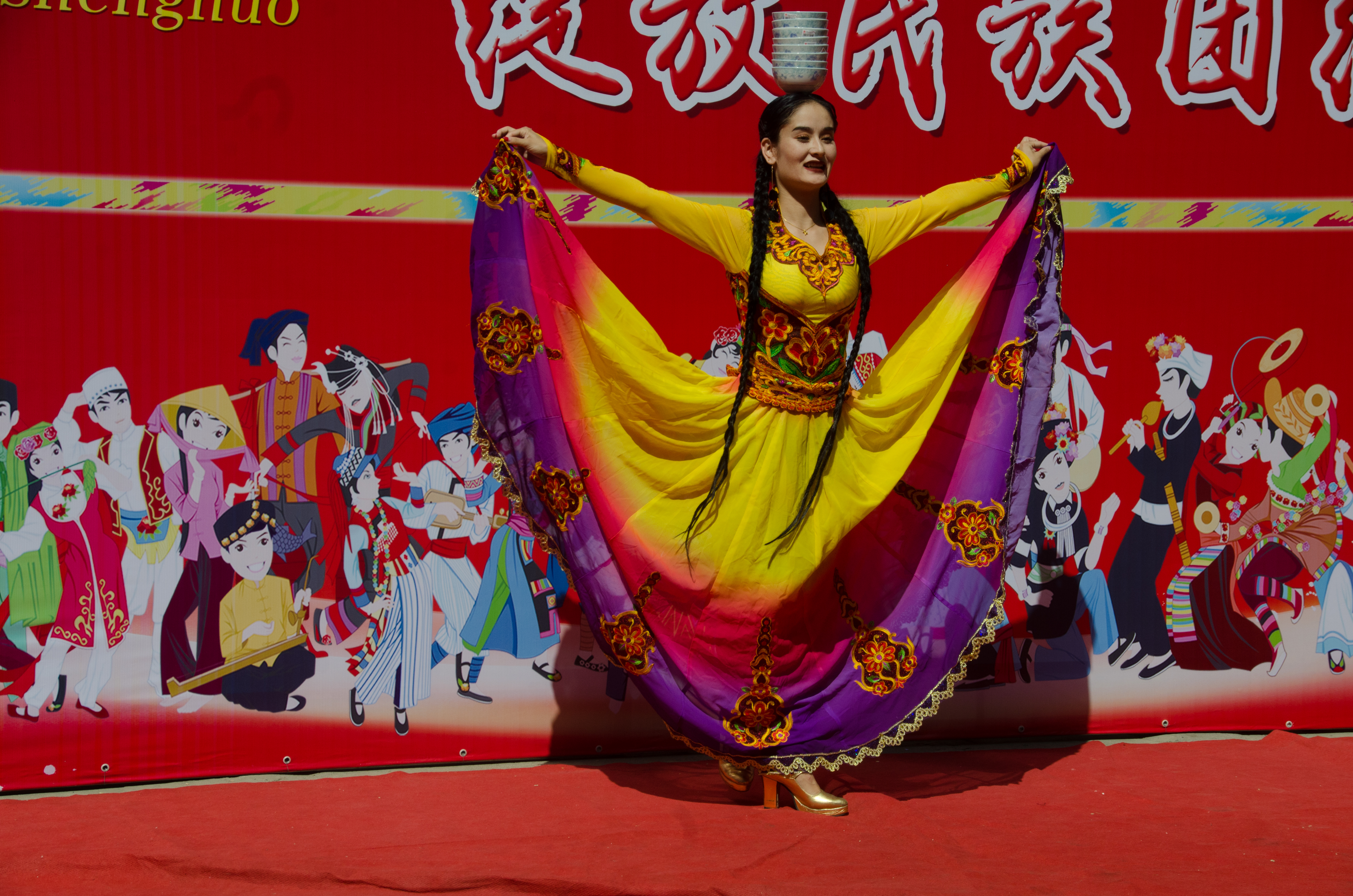


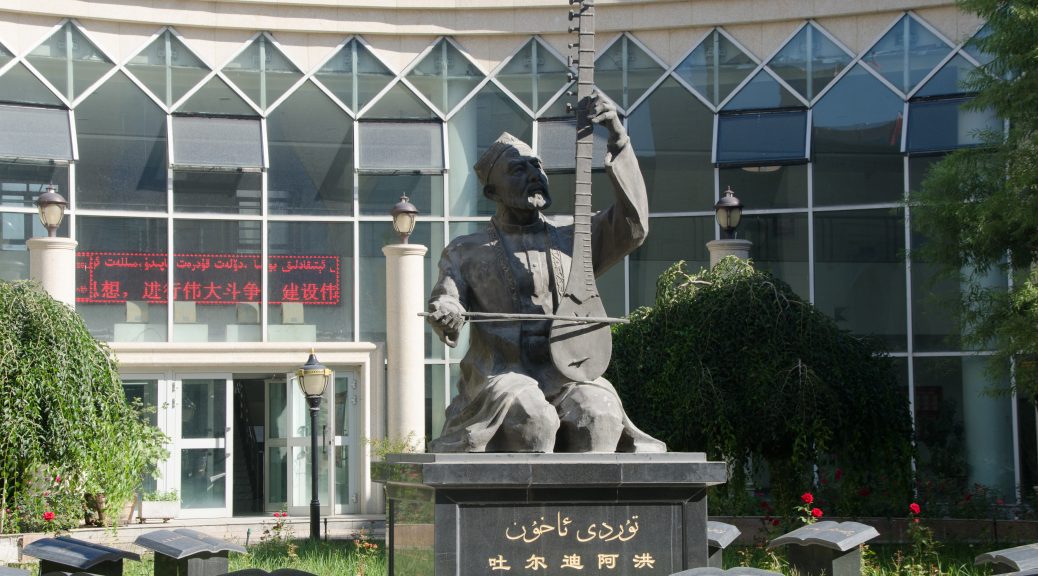


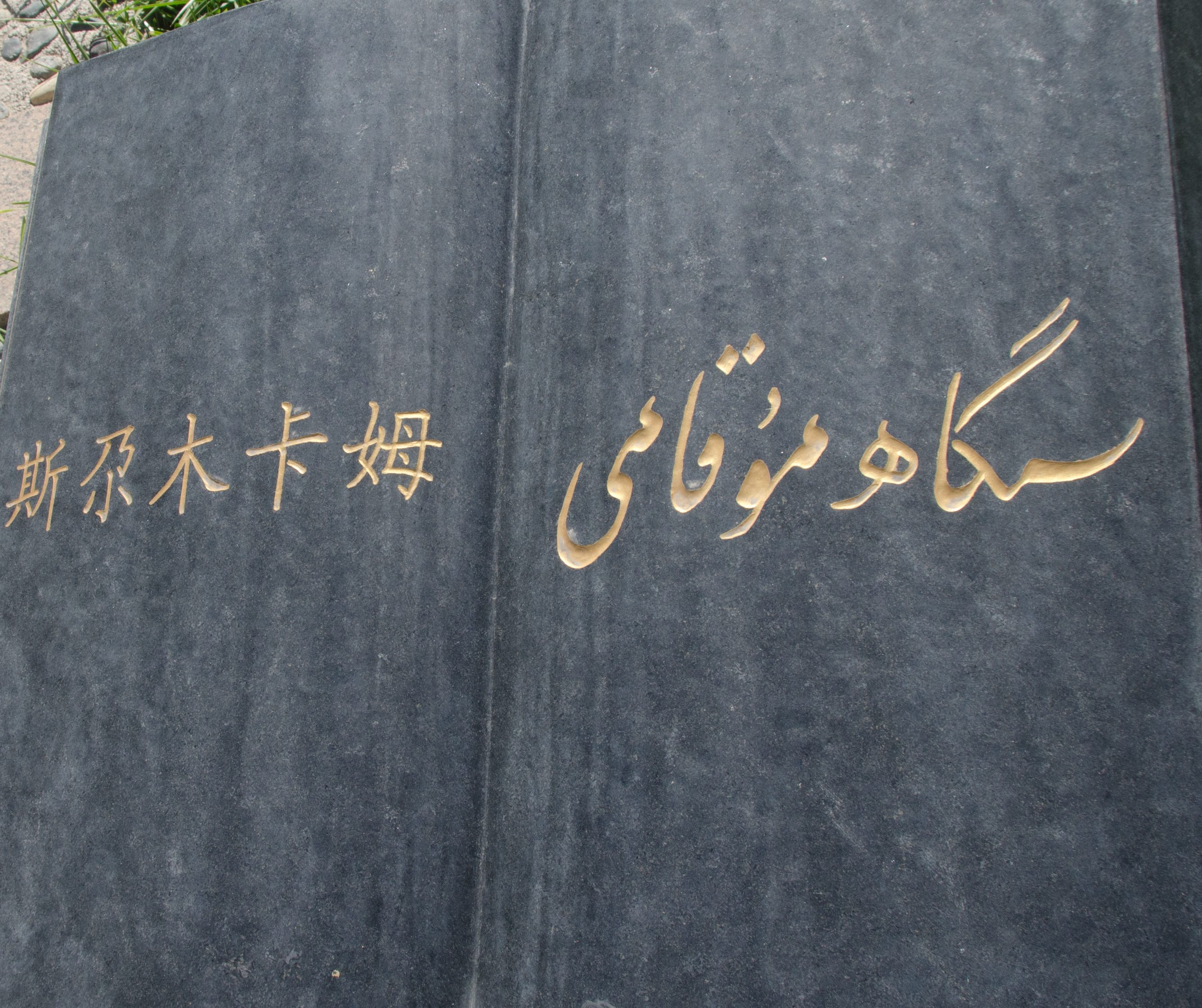
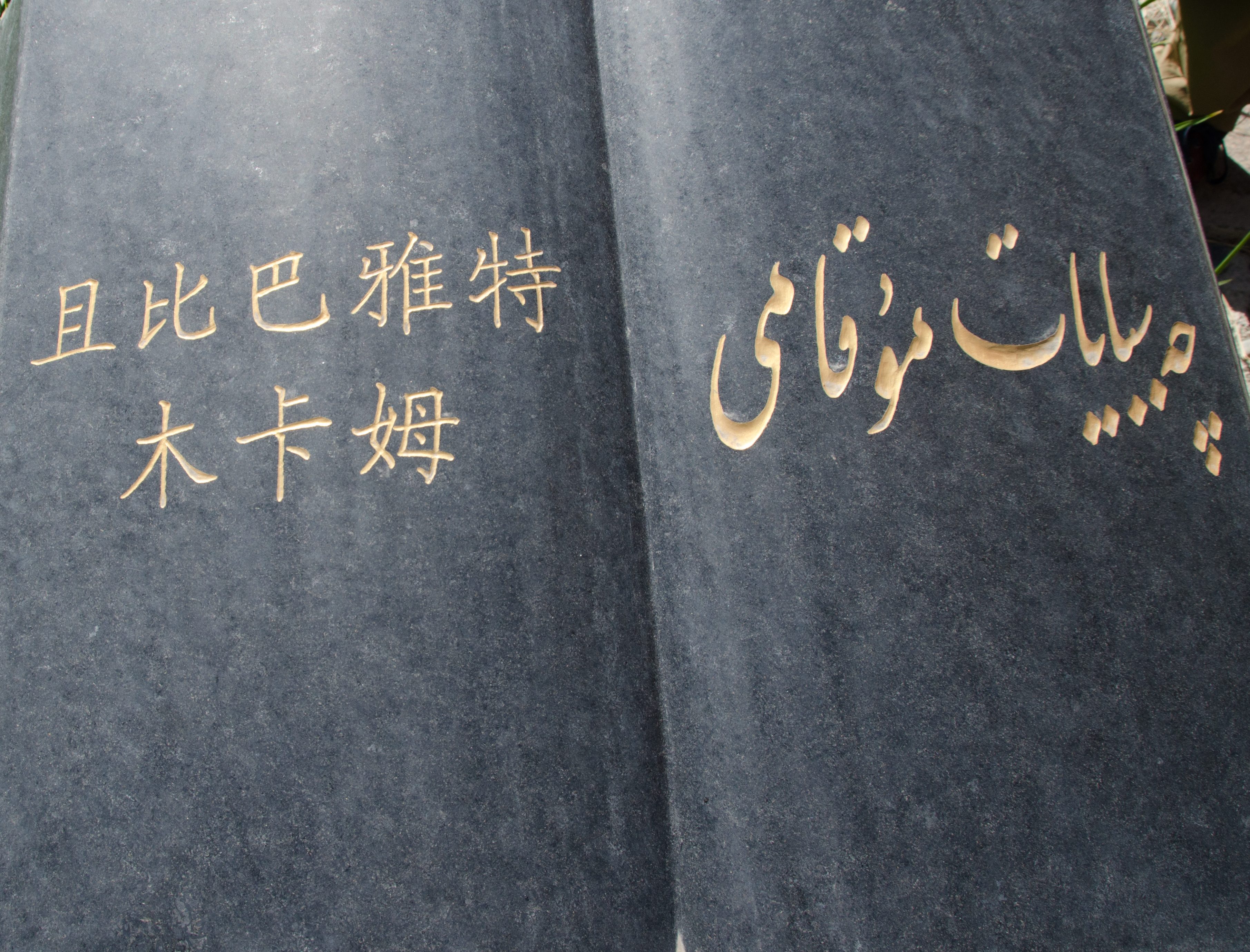
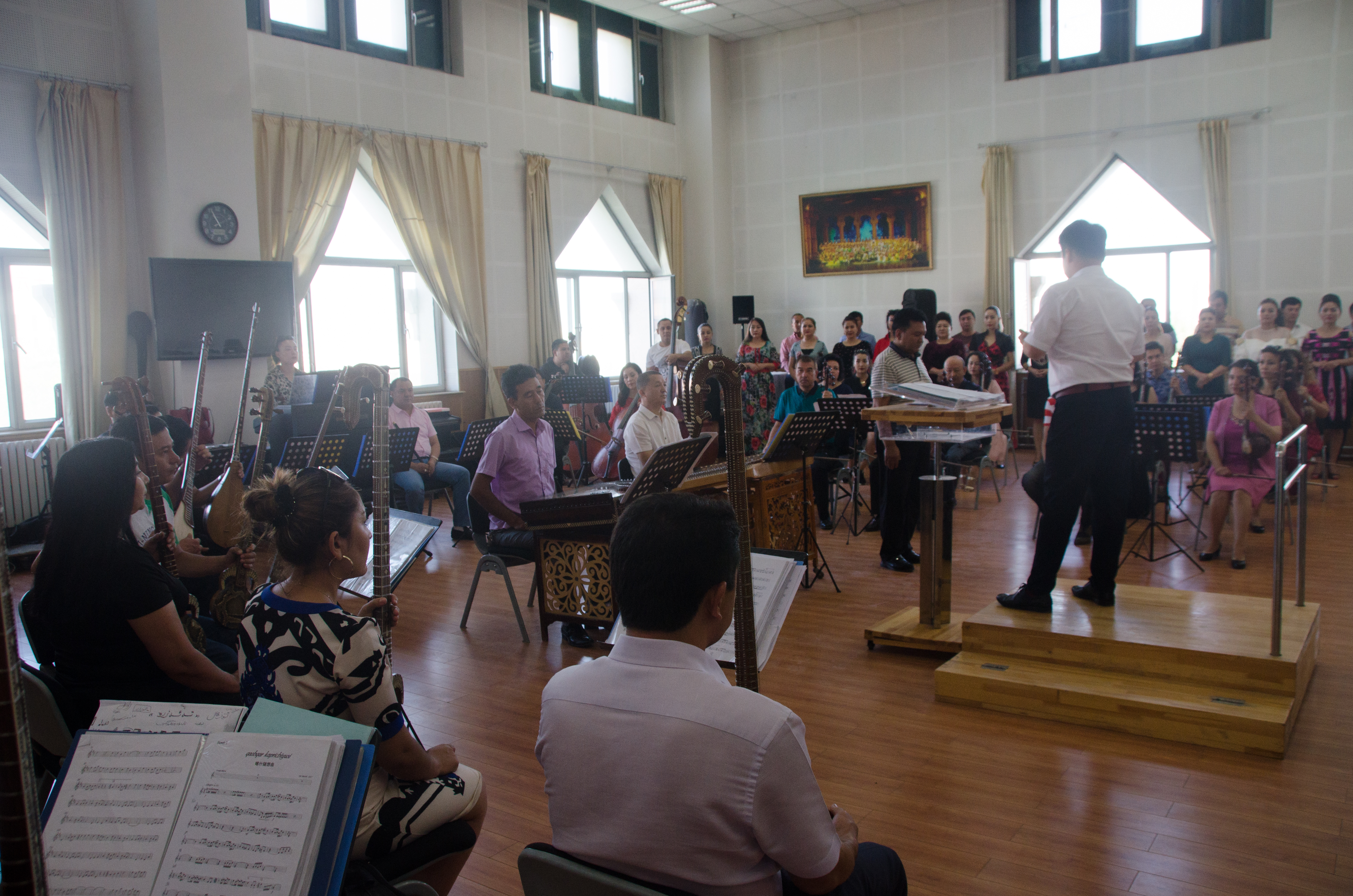
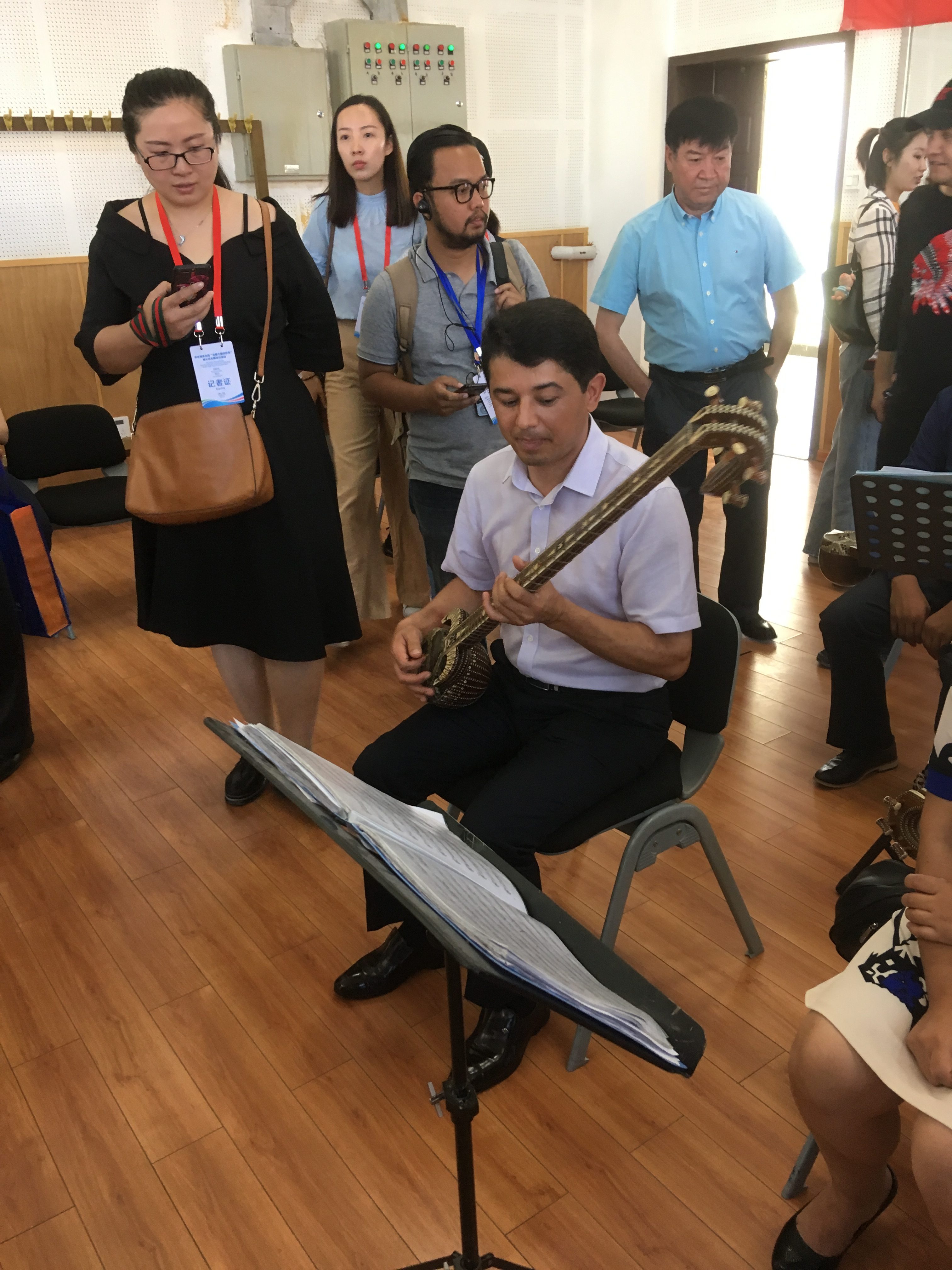
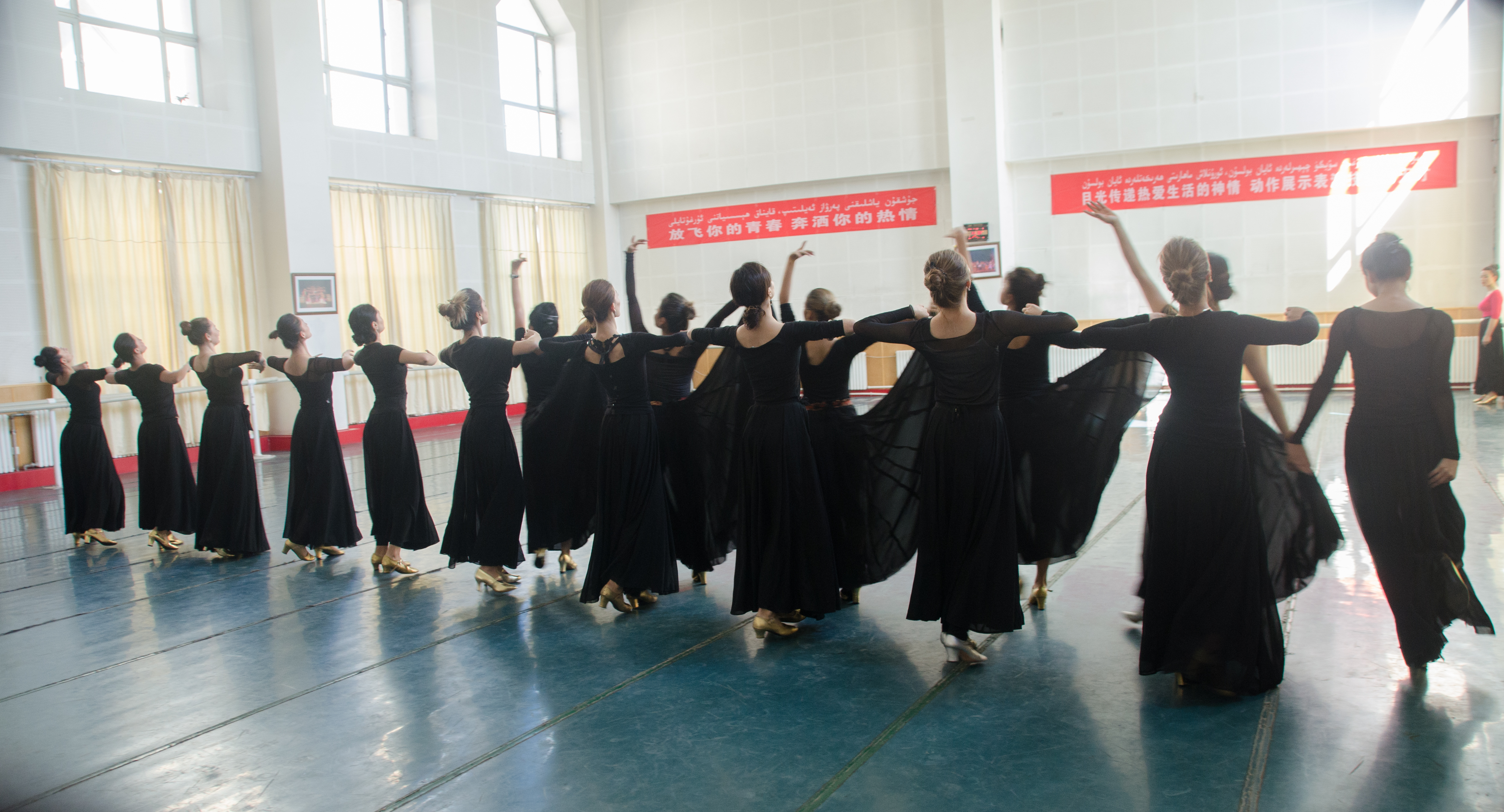
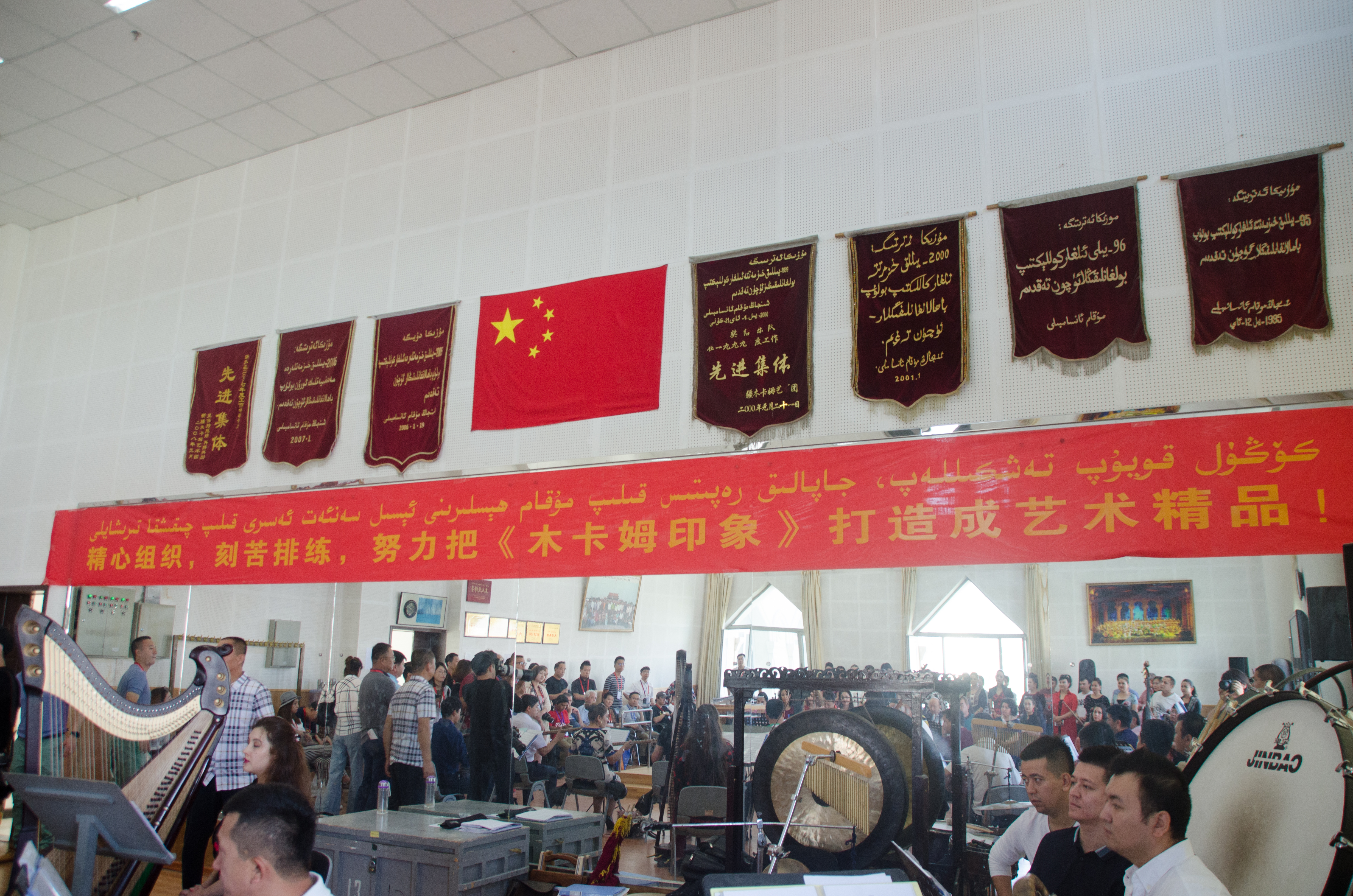

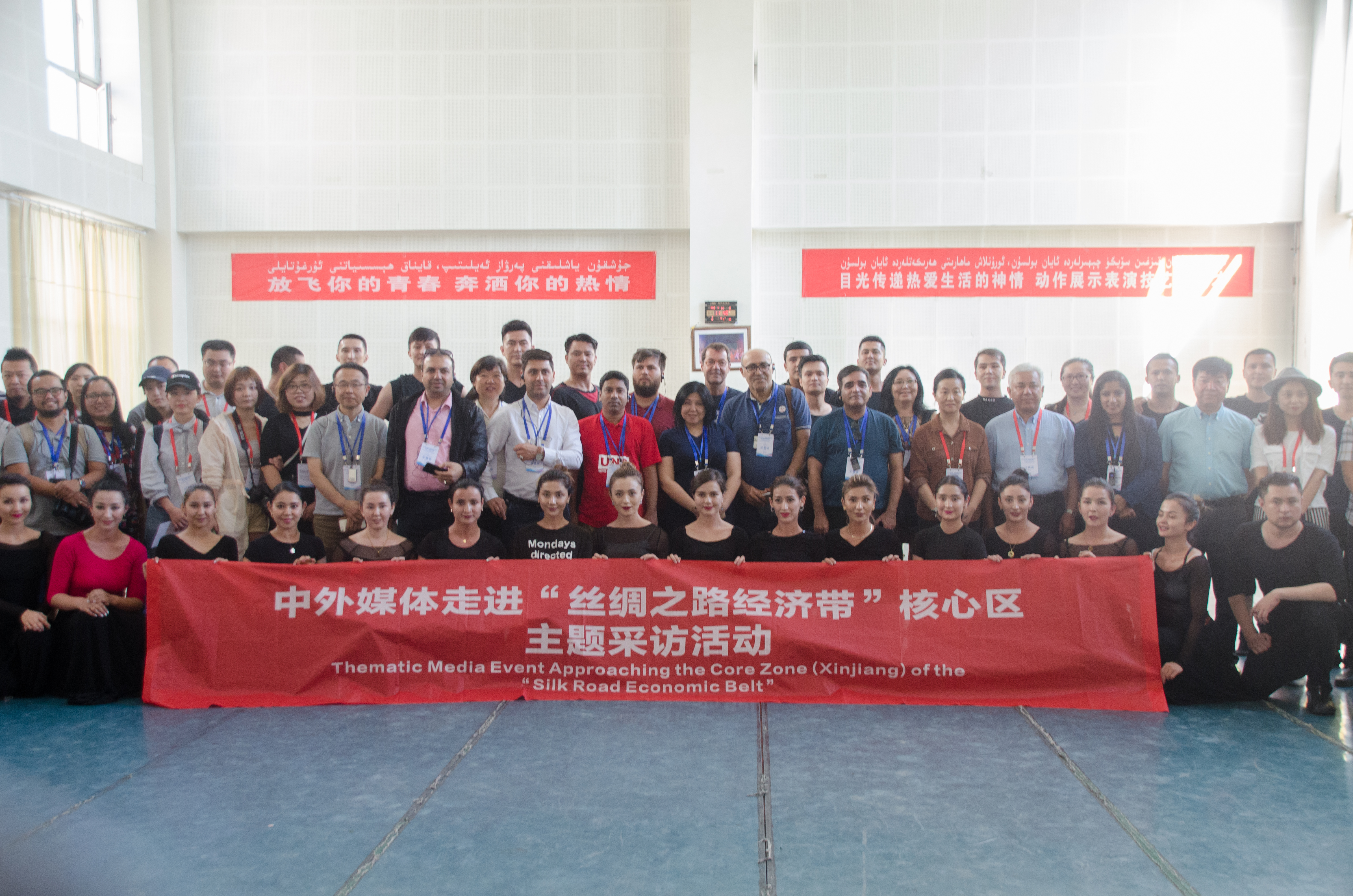
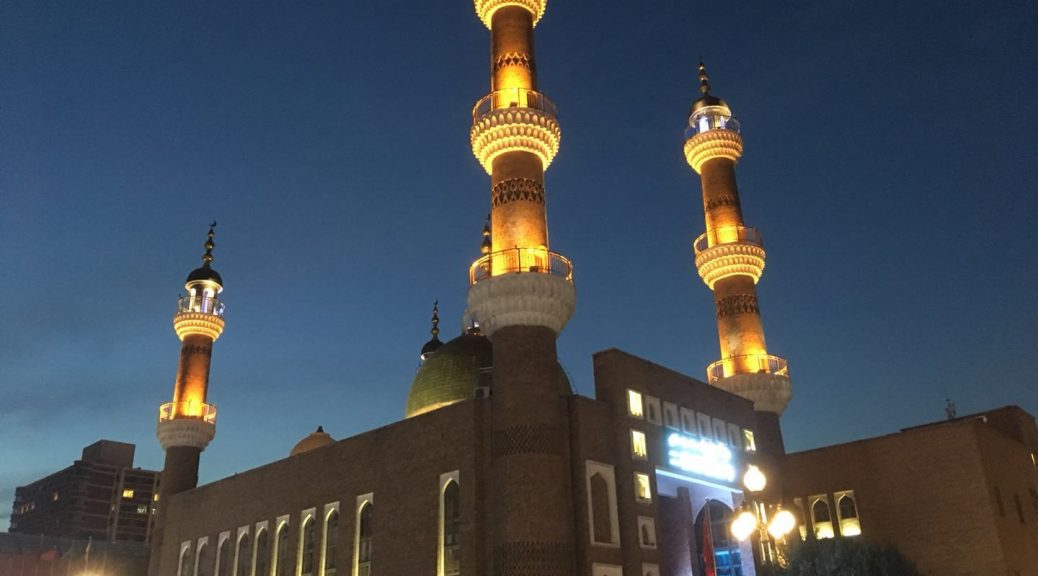
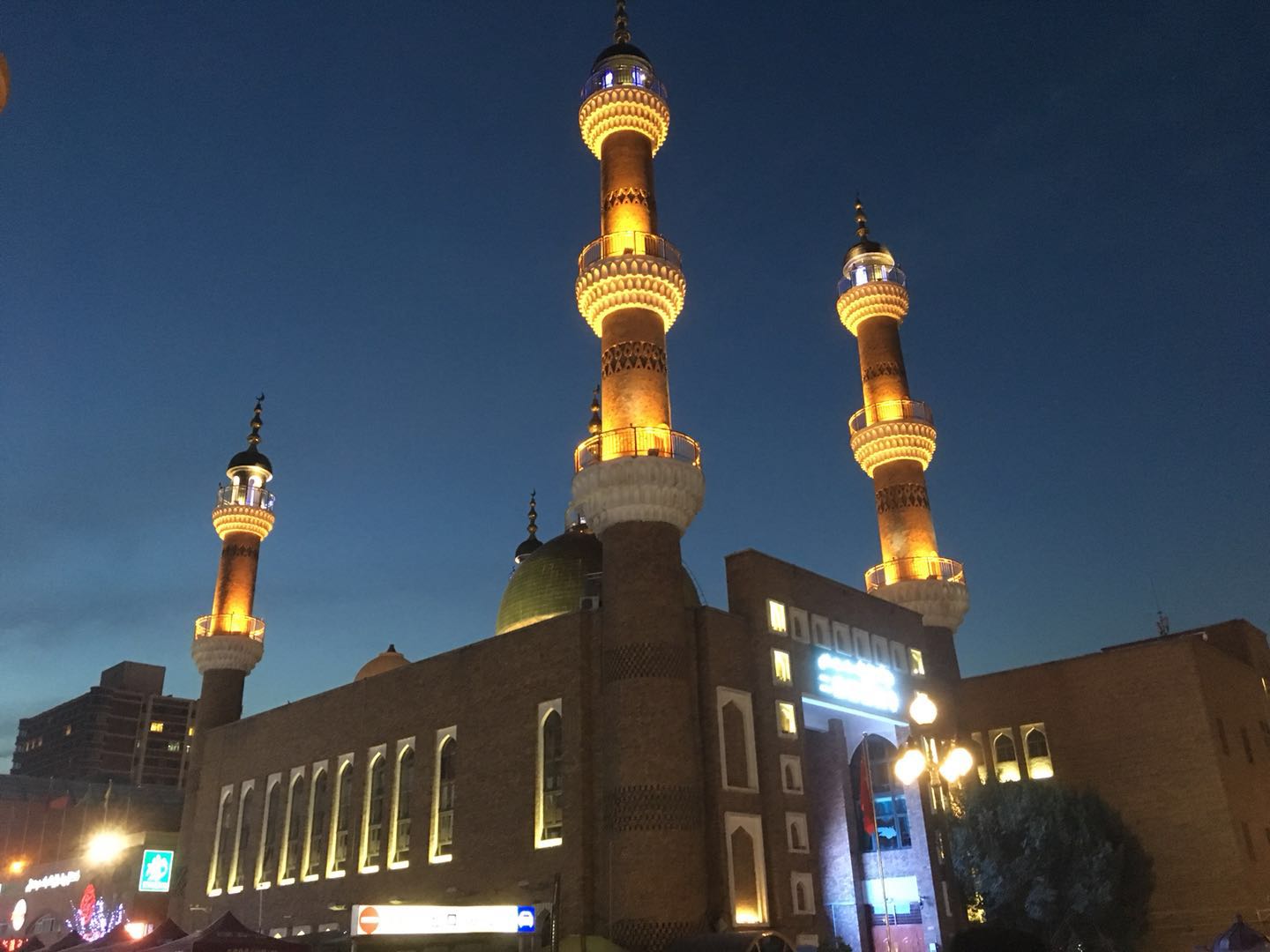
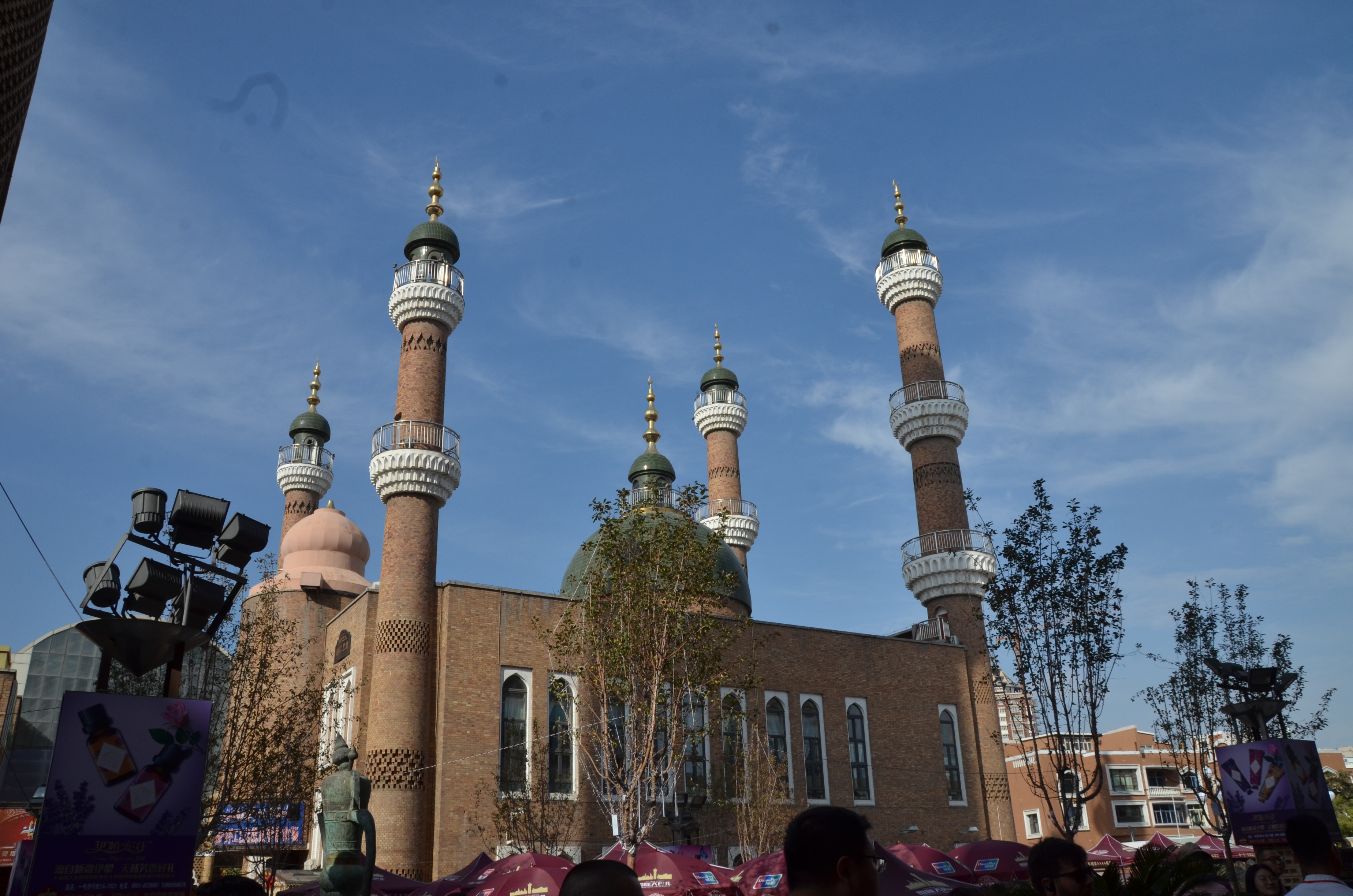
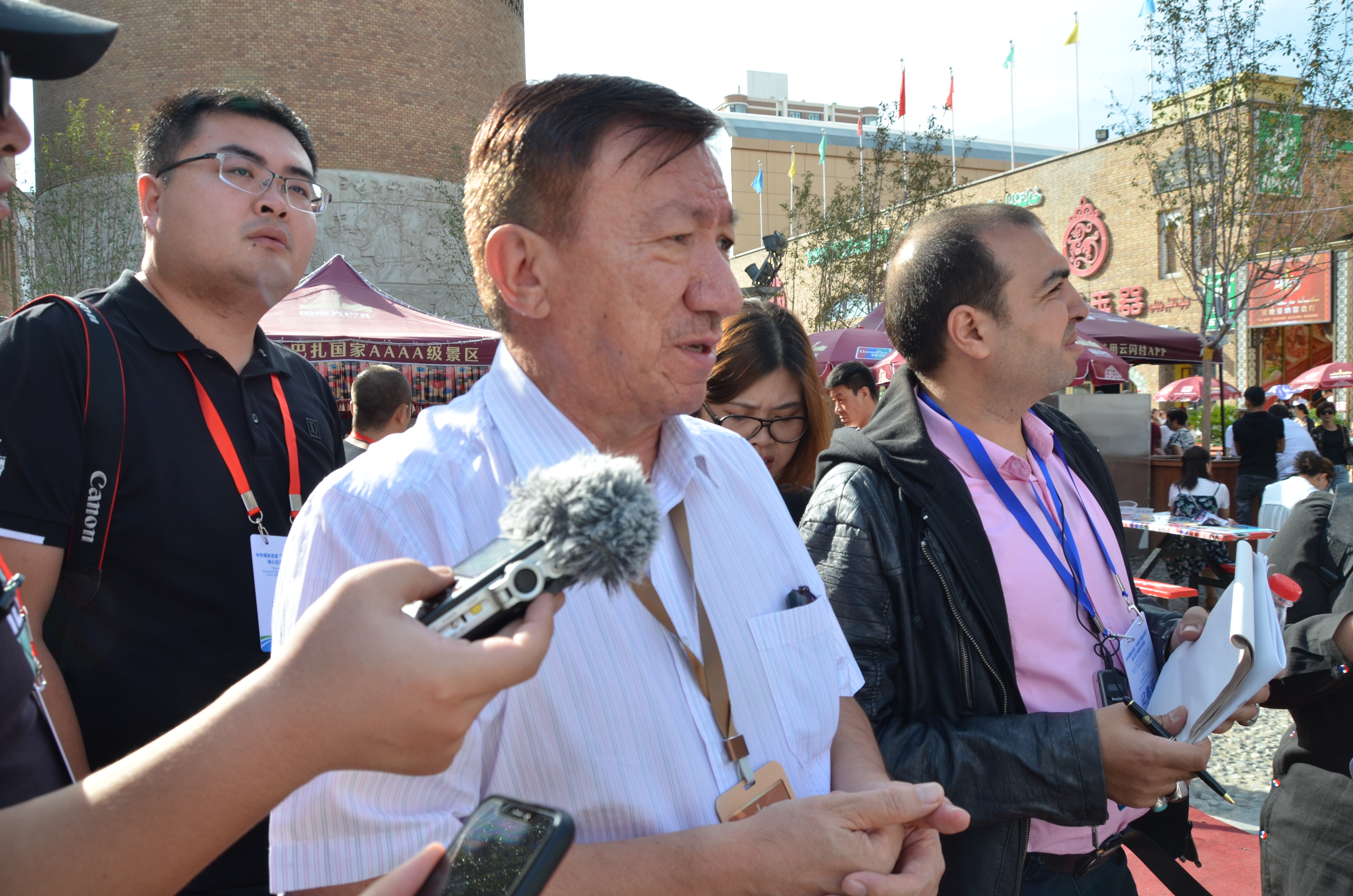

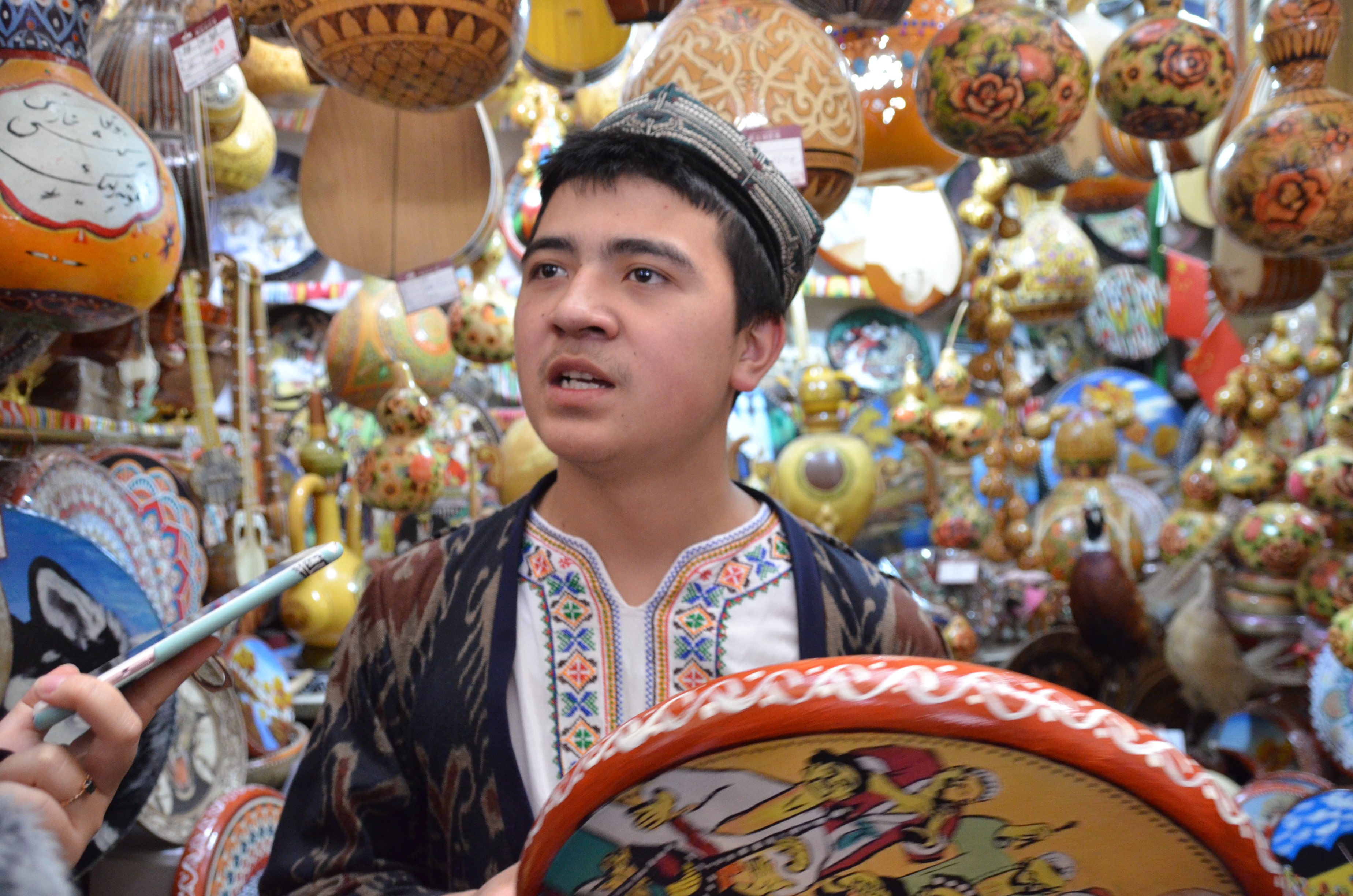

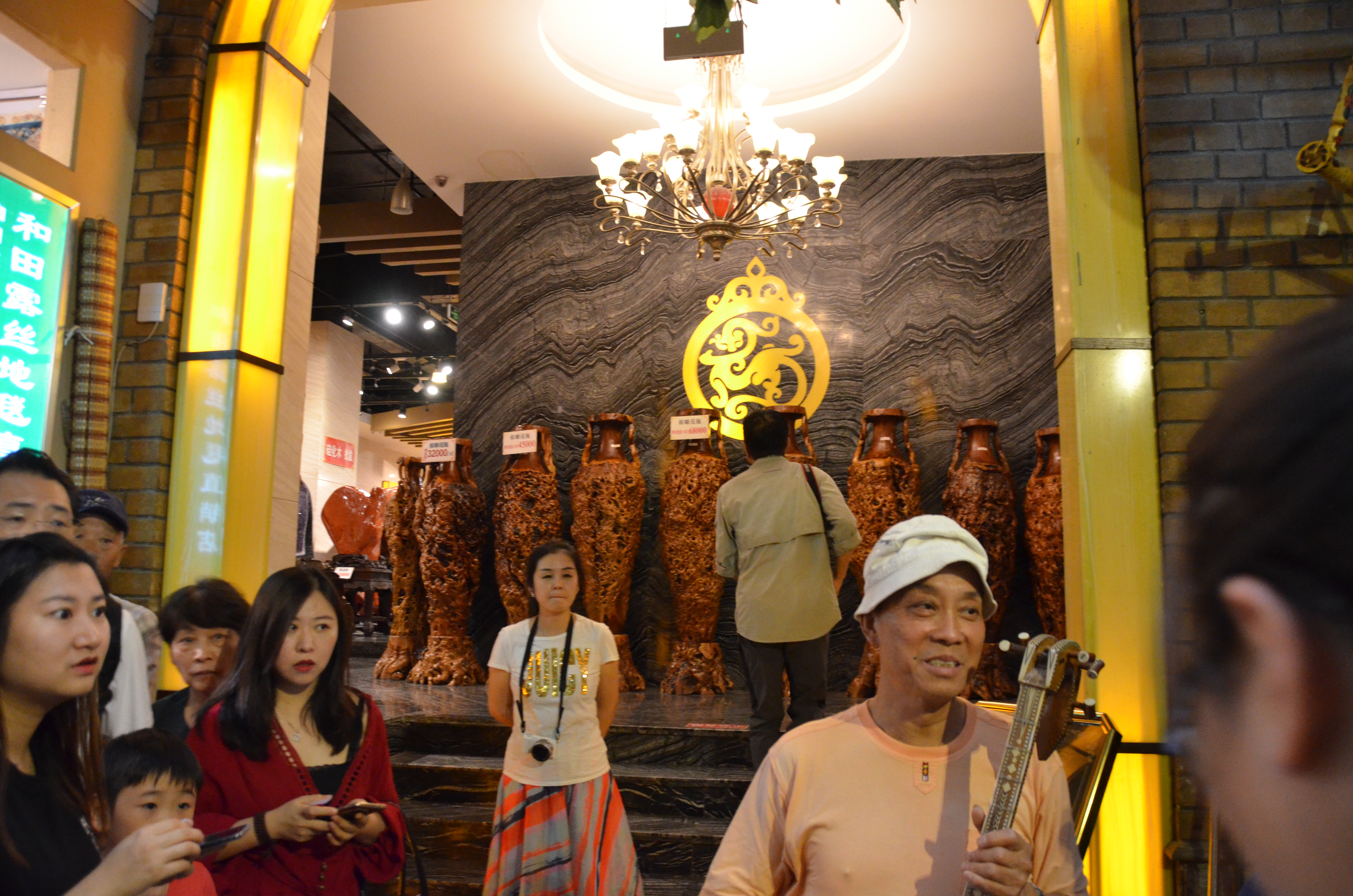 Den här mannen älskar att spela så mycket, så han spelar för turisterna medan hans vän säljer instrumenten.
Den här mannen älskar att spela så mycket, så han spelar för turisterna medan hans vän säljer instrumenten.